Sailboat Keel Types: Illustrated Guide (Bilge, Fin, Full)
The keel type is one of the most important features of your boat. But the different designs can be confusing, so I've set out to create a very clear guide that will help you understand sailboat keels once and for all.
What are the most common sailboat keel types? The most common sailboat keel types are full-length keels, fin keels, bulb keels, wing keels, bilge keels, and lifting keels. Full keels are popular among cruisers, while fin keels are generally used for racing. Bilge keels and lifting keels are typically used in tidal waters, on small fishing boats for example.
In this article, we'll explore the most common keel types together. I'll use diagrams to really hit home the differences of all these keel types, and we'll discuss what keel types are best for liveaboard, ocean cruising, and lake weekend trips. After reading this article, you'll know what to choose - and why.
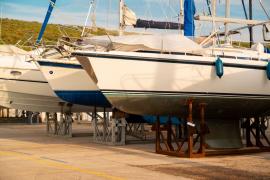

Sailboat Keels Explained
On this page:, overview of sailboat keel types, keel types: fundamentals, modified full keel, centerboard.
If you just want a quick overview, here's a list with the most common keel types and a short description. More detail will follow below.
The most common keel types
- Full keels run from front to aft and are the most stable keel type, making them the most popular cruising keel.
- Fin keels offer the best performance but are less comfortable. This makes them popular for racing. Fin keels are bolted on to the hull and generally run deep and thin.
- Bulb and wing keels are both variants on the fin keel.
- Bulb keels carry additional ballast in the tip, making them more stable.
- Wing keels have two tips at the end of the keel, which reduces crossflow, improving directional stability.
- Bilge keels are double fin or double full kees, which allows the boat to be beached, making them the most popular keel for tidal waters.
- Lifting keels are moveable keels that can be lowered and raised, allowing the boat to enter shallow waters as well.
- Centerboard keels are a pivoting lifting keel, allowing to sail both coastal and inland waters.
- Leeboards are fins on the sides of flat-bottomed hulls boats, making a keel unnecessary.
Properties of each keel type
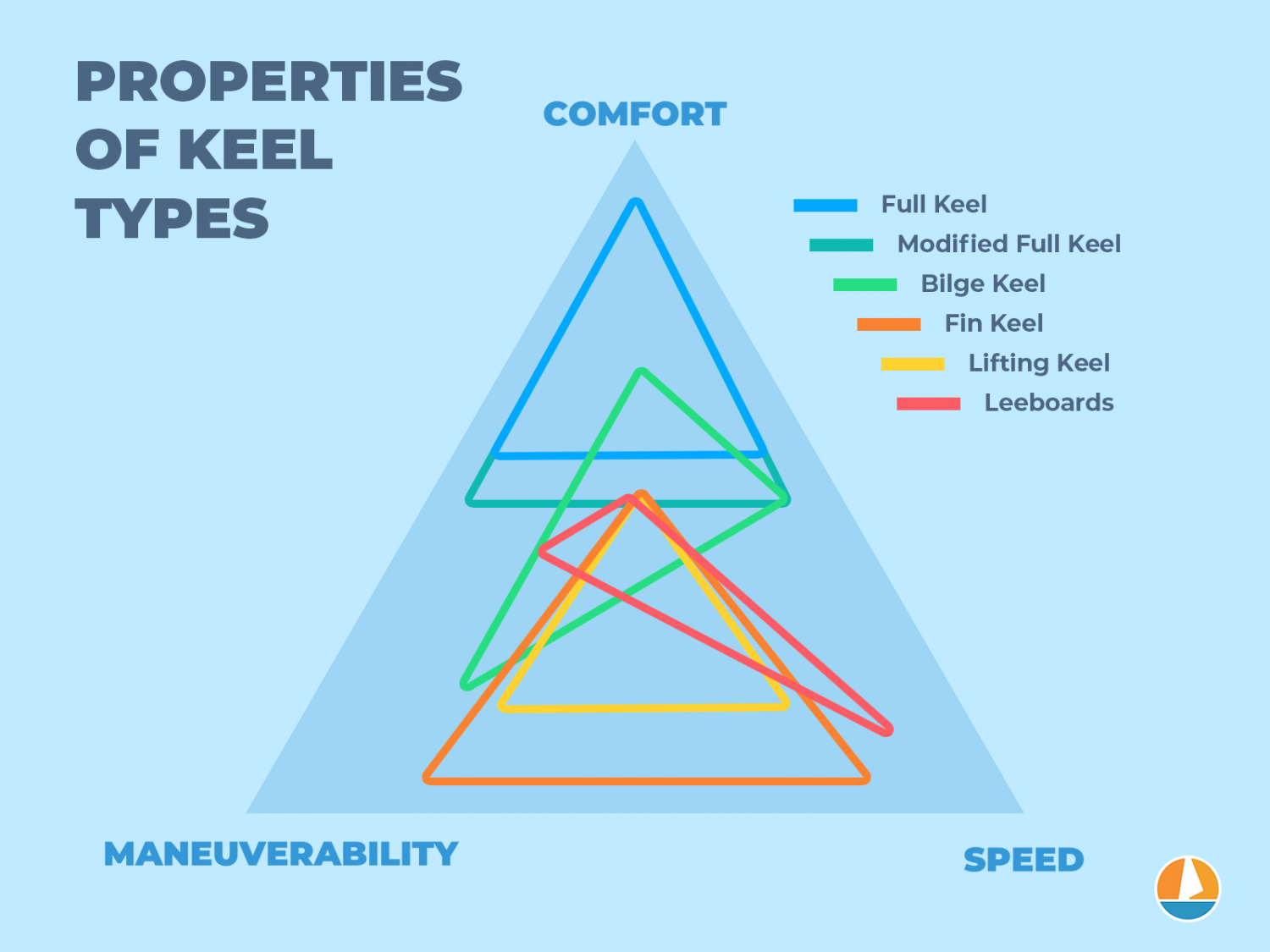
What does a keel do?
What does the keel do? A keel is a vertical blade running down from the hull. It is weighted and acts as a ballast, countering the boat's tendency to heel and preventing it from tipping over. The wetted surface under the waterline reduces slippage to leeward by creating a track, which counters the sideway force of the wind on the sails.
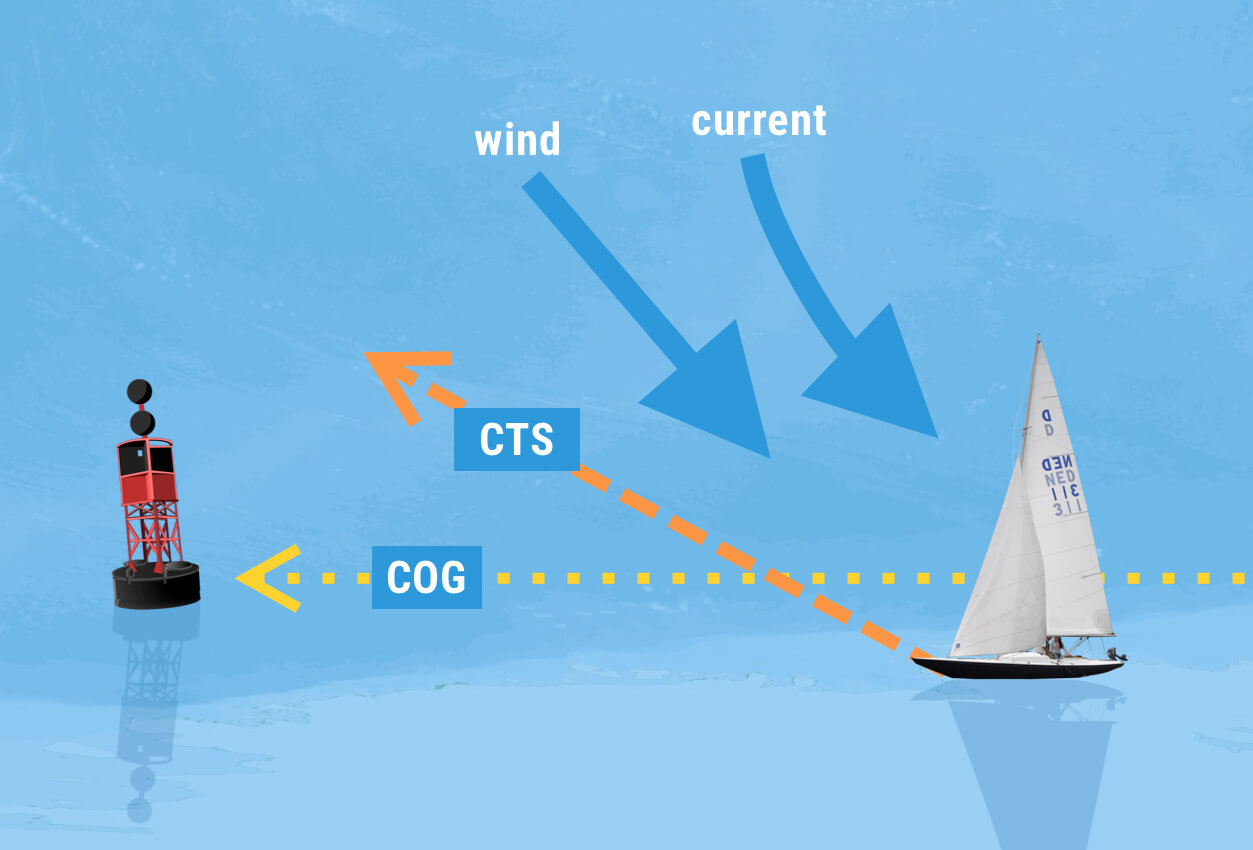
The reason sailboats don't tip over is that the weight of the keel counters the buoyancy of the hull, which means it will pull the boat downward. This downward force reduces heel and prevents the boat from rolling.
A canoe doesn't have a keel. Try stepping into that: it will want to roll.
It counters the horizontal force the wind puts on the sails. Whenever the force on the sails increases, the resistance of the water on the keel increases proportionally.
The heavier the keel, the less heel you'll get.
A keel reduces slippage to leeward. Slippage is simply the amount you fall off course because of the direction of the wind and current. Leeward is the side of the boat behind the wind.
So if you don't have a keel, you will fall off course quite a lot because the wind will push you over the water surface.
You will also heel quite a lot since there is nothing beneath the water surface to counter the force of the wind high up in your sails.
A keel fixes both of these issues and makes sailboats one of the most reliable boats in heavy winds and storms.
You can read on about how keels work here.
Keels can be classified by multiple dimensions. You can look at them from the side or the front. You can also classify them based on properties.
Before I dive into each keel type in-depth and show examples, let's make sure we have the same starting point.
There are essentially two sorts of keels:
Fixed keels
Movable keels.
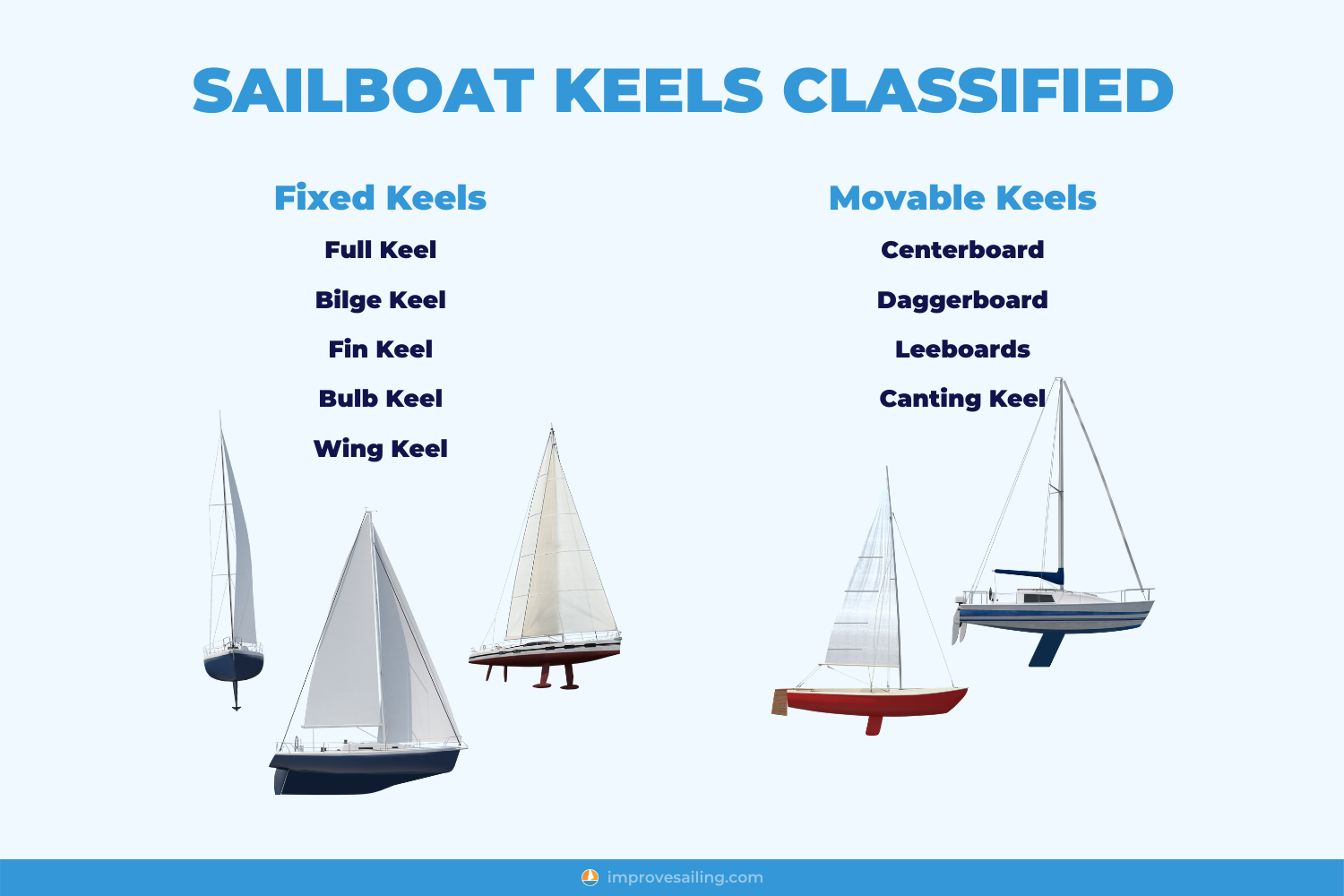
Fixed keels are keels that are integrated into the hull or bolted on. They can't be moved or lifted.
When looking at fixed keels, you can divide them up further based on the side view. There are three main categories:
Bilge keels
Full keels are more comfortable, provide better stability and protection, but are also slower than fin keels.
Fin keels are less comfortable, provide less stability, are more vulnerable, but they're also a lot faster than full keels.
Bilge keels are double keels: one on each side of the hull. This allows them to be beached, which comes in handy in tidal waters. They are generally a lot slower and less maneuverable compared to fin keels.
Movable keels can be lifted from the water, creating a shoal (shallow) draft, allowing the boat to enter both shallow waters and coastal waters. This makes it a very versatile keel type. There are two main designs:
Lifting keels
Lifting keels can be lowered and raised through a slit in the hull. Examples of lifting keels are the daggerboard and centerboard.
Leeboards are wooden swords attached to the side of the hull and prevent slippage to leeward, but they don't stabilize the boat, nor counter heel by adding ballast.
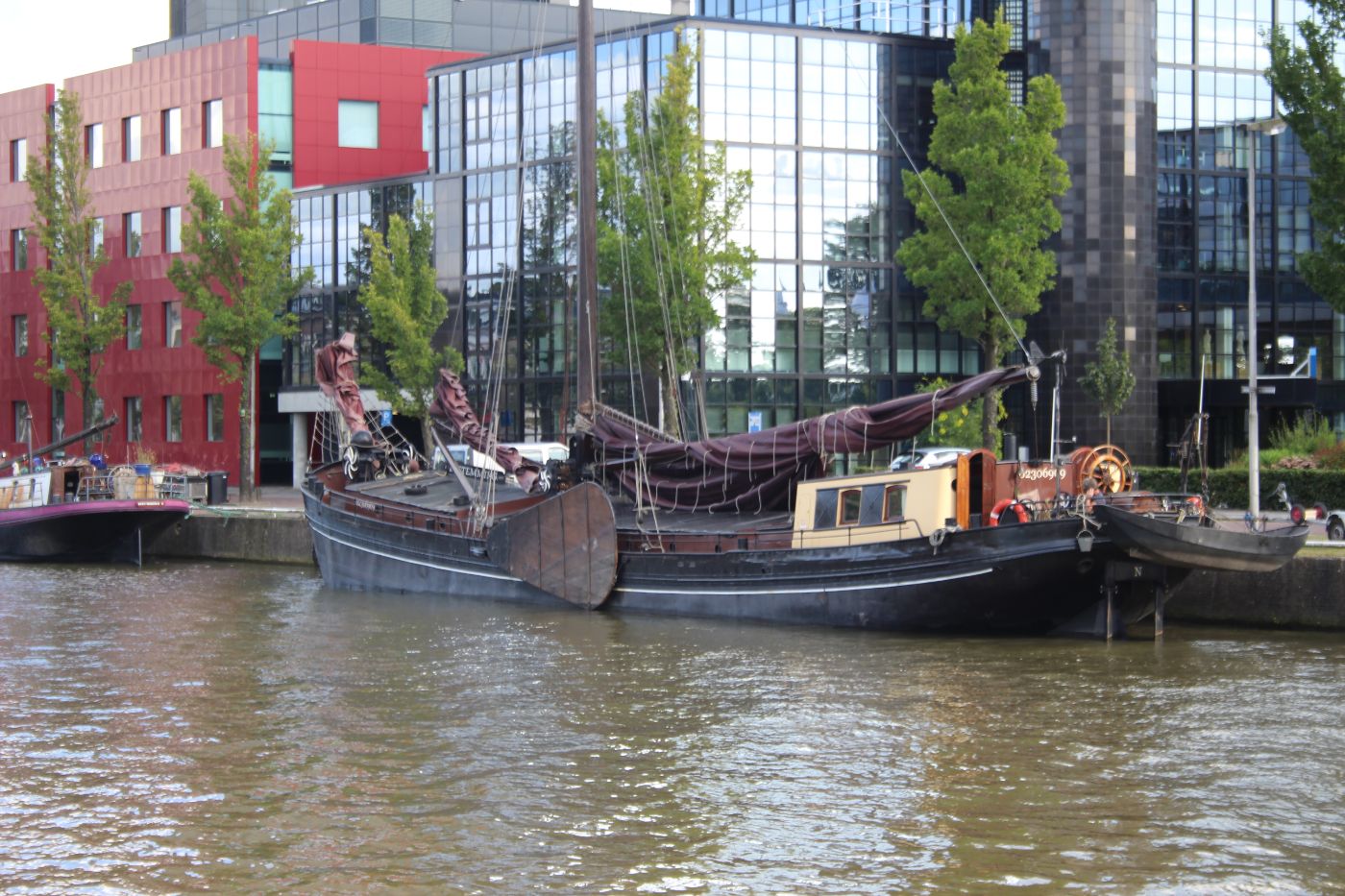
With fin keels, there are different tip designs available. The most common two tip designs are:
These are both variants of the fin keel. Generally, these keel designs are mentioned in one breath with full keels and fin keels, creating confusion on what kind of keel they are. But it's important to understand that they are a sub-category of fin keels.
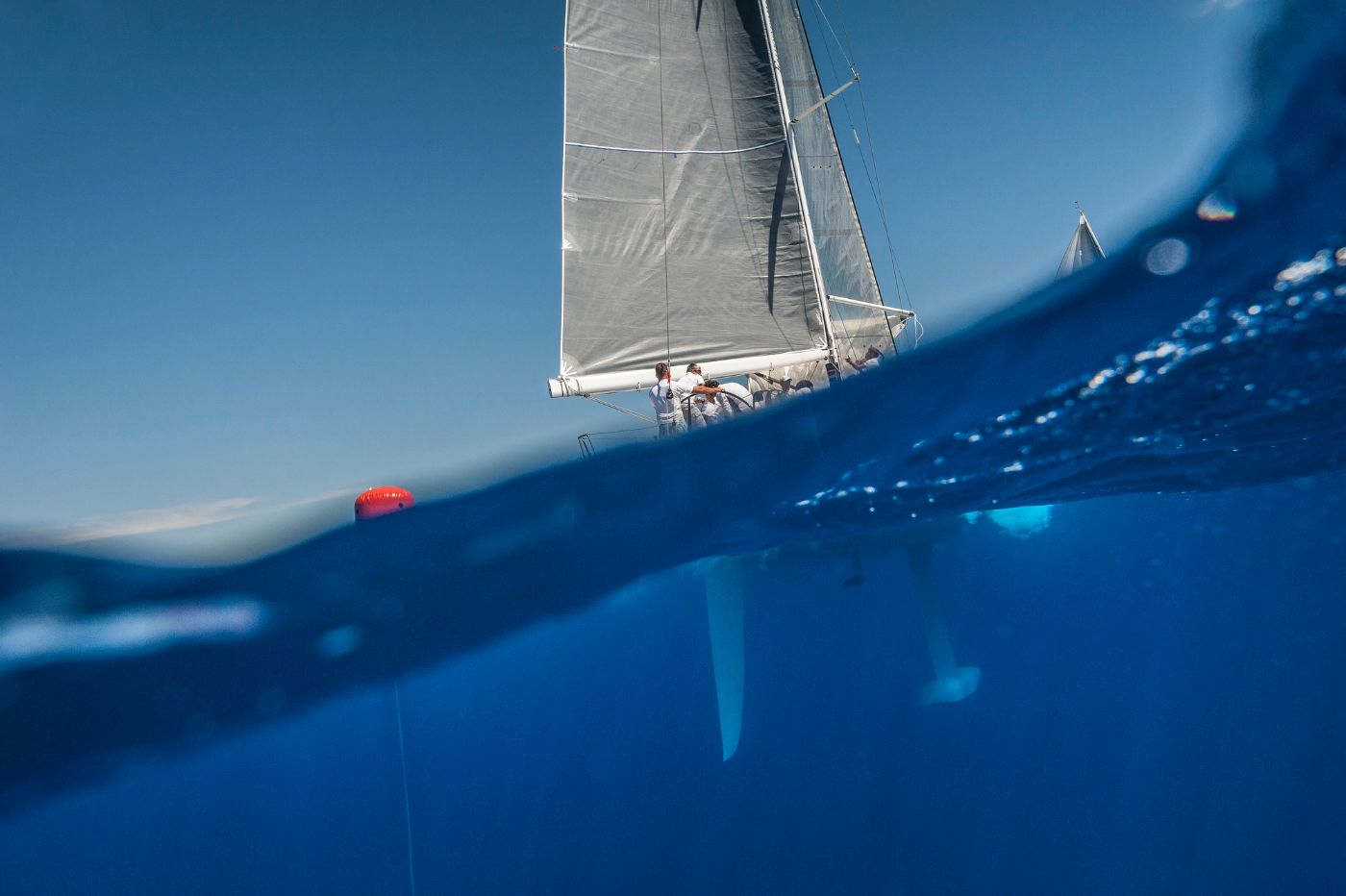
Rudder design
As with the tip of the fin, there are different rudder designs that may apply to both fin and full keels. The two most common rudder designs are:
Skeg rudder
Spade rudder.
A skeg is a structural part of the keel in front of the rudder that protects the rudder. The keel encompasses the rudder, preventing any rogue ropes, weeds, or rocks from damaging the rudder.
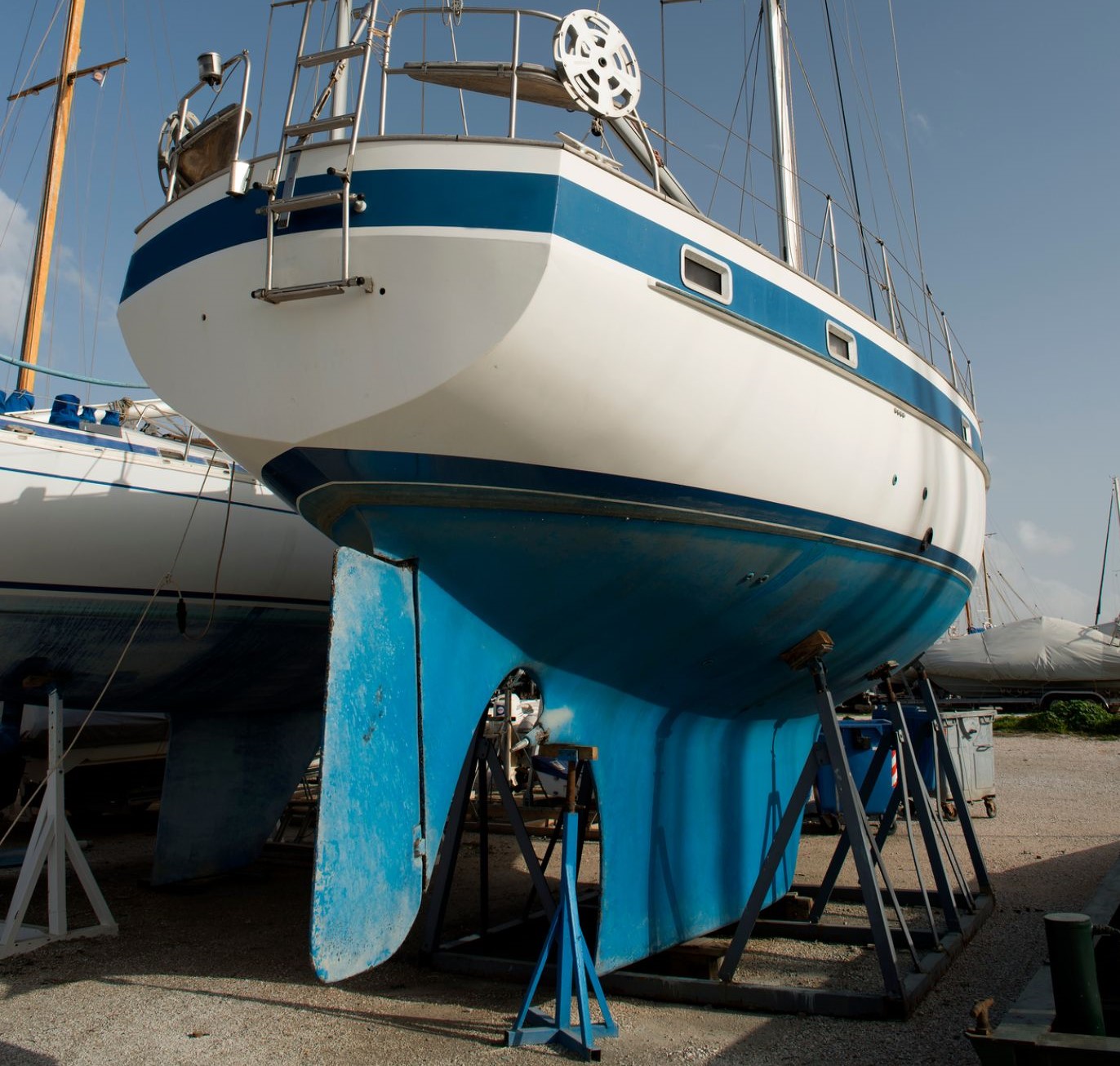
A spade rudder is an unprotected rudder: it doesn't have any structural protection from the keel design. It is simply attached to the hull. This design is very common.
Alright, we understand the big picture. Let's dive into more detail for each keel type and discuss the pros and cons.
Fixed keel Good for cruising and liveaboards Comfortable
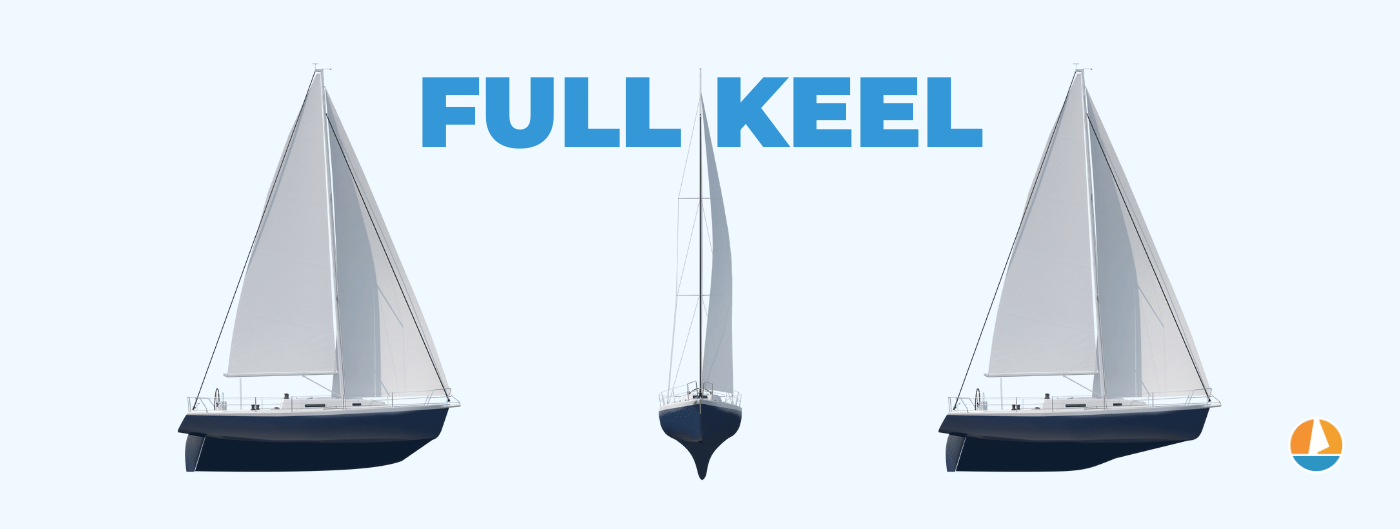
What is a full keel? A full keel runs from front to aft for at least 50% of the hull and is fully integrated into the hull. It has the largest wetted surface of any keel type, and it is also the heaviest. This results in directional stability and reduced heeling, providing the most comfortable ride, but also the slowest.
The wetted surface simply means the amount of water contact area. With such a large wetted surface, it decreases slippage to leeward the most of all keel types, while it counters heeling the most as well.
The full keel is the most comfortable and stable keel type available. However, comfort comes at a price. It delivers the worst performance due to this large wetted area. It is the slowest of the keel types, and it has the worst windward performance.
This makes full keels particularly great for longtime cruisers or liveaboards who prefer comfort over speed, but less ideal for daysailers who need to navigate in and out of slips regularly.
Since it runs for at least 50% of the hull, it doesn't need to run as deep as a fin keel, resulting in a more shoal draft.
Heavier keels result in increased displacement, so a full keel boat will need a larger sail area to compensate for its weight.
For a more detailed discussion on full keel advantages, I recommend reading William's excellent article 5 Surprising Advantages of a Full Keel Sailboat here.
Example sailboats with a full keel:
- Nicholson 22
- Island Packet 380
- Beneteau Oceanis 411 Clipper
- Beneteau First 50
- Jeanneau Sun Shine 38
- Dufour 455 Grand Large
There are a lot of great cruising boats with full keel designs , some of them considered classics.
Full Keel with skeg rudder
Full keels with a skeg rudder design have a protected rudder, thanks to putting a structural part of the keel directly in front of the rudder. This helps with fending off any hazards to the rudder, like floating pieces of rope, rocks, or garbage, and protects it in case of running aground. The skeg design ensures the rudder is nearly impossible to break off.
Fixed keel Good for cruising and liveaboards Faster than a regular full keel

What is a modified full keel? A modified full keel is a full keel with a cutout at the front, reducing the wetted surface slightly, which increases performance without sacrificing too much comfort and stability. After the full keel, it has the best directional stability and the least amount of heel.
The modified full keel is popular among (bluewater) cruisers, thanks to its increased handling and performance. Most modified full keels have a skeg rudder, ensuring it is well-protected.
The slightly reduced weight and wetted surface improve windward performance quite a lot, but it is still one of the most stable keel designs out there.
Example sailboats with a modified full keel:
- Hallberg-Rassy HR 40
- Dufour Arpege 30
- Beneteau Oceanis Clipper 281
- Jeanneau Sun Odyssey 37.2
Fixed keel Good for racing Fast
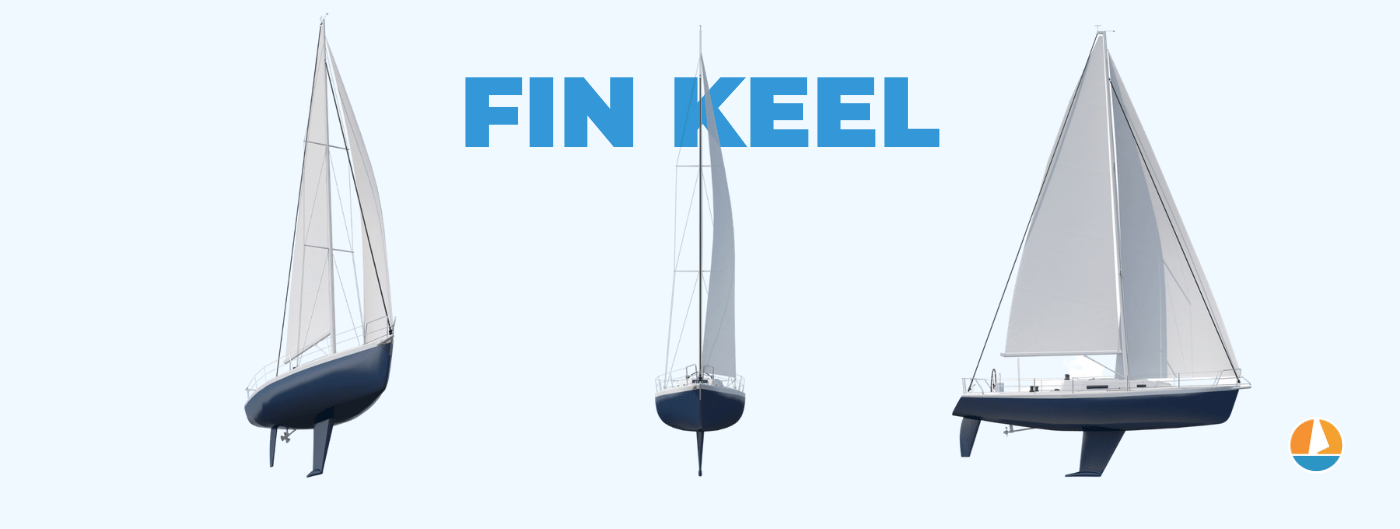
What is a fin keel? A fin keel is a long, weighted blade attached to the bottom of the hull. It is lighter, faster, and more maneuverable than a full keel, but also more vulnerable. The increased distance between ballast and sails provides a lever, reducing the need for a large wetted surface or additional ballast.
Fin keels are generally bolted onto the hull and run deeper and thinner than a full keel. They are also lighter. This helps increasing performance (a lot), making fin keels a lot faster in all situations.
There are some major disadvantages to fin keels, however. Fin keels are a lot less comfortable than full keels and allow for more heel and a less solid track, so less directional stability. Fin keels are also a lot more vulnerable than full keels. They can break off when running aground, or get damaged.
They are very popular among racers and perform better when maneuvering in tight spots, like getting in and out of slips.
Example sailboats with a fin keel:
- Catalina 30
- Jeanneau Sun Odyssey 36.2
Fin keel with skeg rudder
Fin keels with a skeg rudder use a small structural part in front of the rudder to protect it. This design is mostly integrated into the hull, making it less vulnerable, and a great compromise between speed and safety.
Fin keel with spade rudder
Fin keels with a spade rudder have a completely exposed rudder, and typically a fin that is simply bolted on. The keel isn't integrated into the hull, making it more vulnerable and less comfortable.
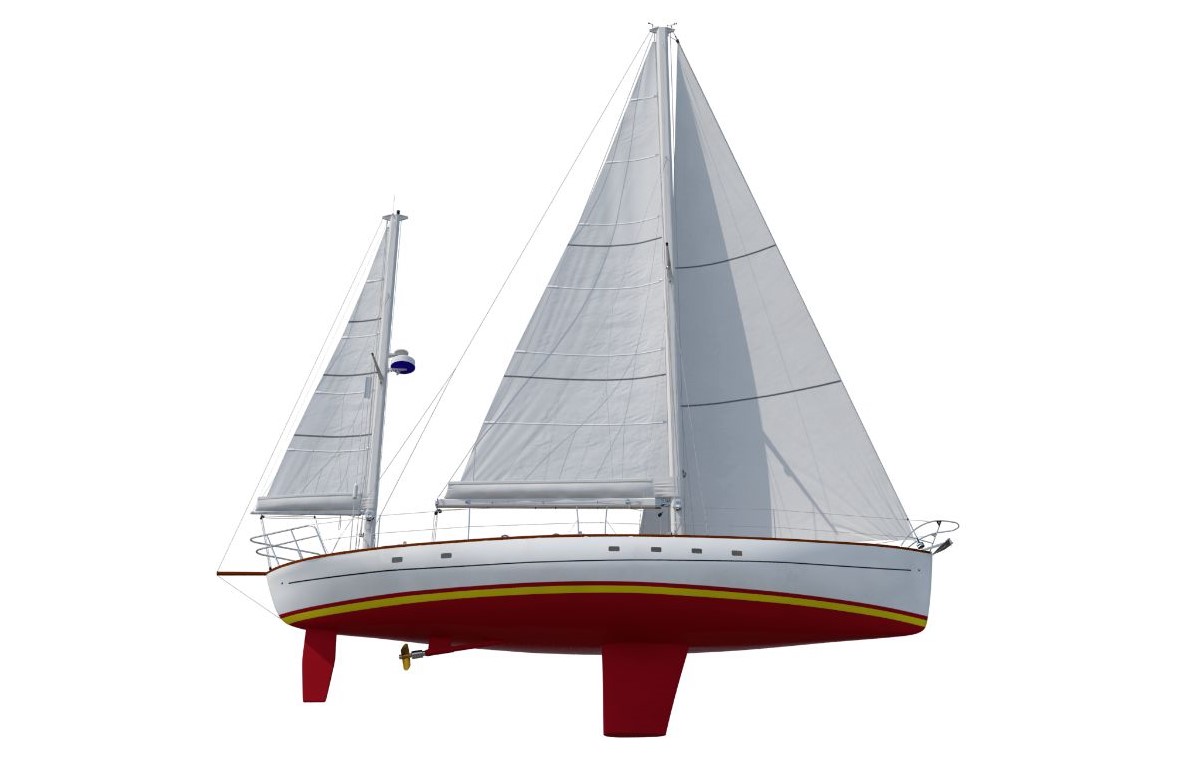
Fin keel variant Good for cruising Less crossflow
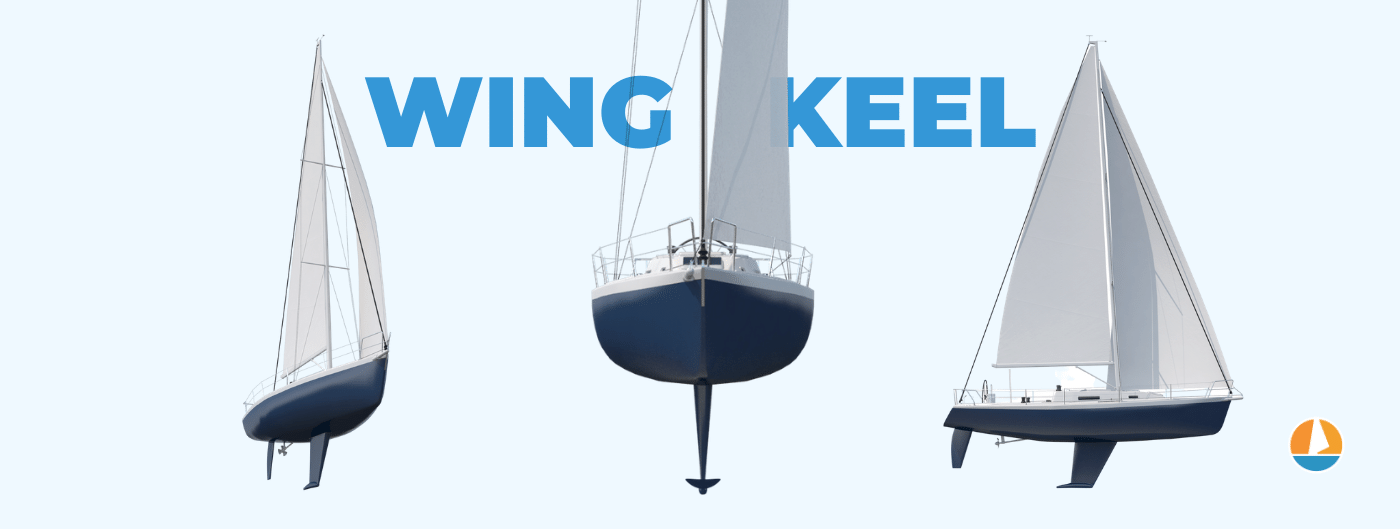
What is a wing keel? A wing keel is a fin keel with a horizontal foil at the tip, which is wing-shaped and generally weighted. Its shape reduces crossflow, improving directional stability, and its ballast decreases heel, resulting in a more comfortable ride. The addition of a wingtip allows for a shorter fin, reducing draft.
Wing keels are good for cruising since this design improves directional stability compared to a regular fin keel or a bulb keel.
We'll discuss the wing keel's advantages and disadvantages in more detail in this article.
Fin keel variant Good for cruising Stability
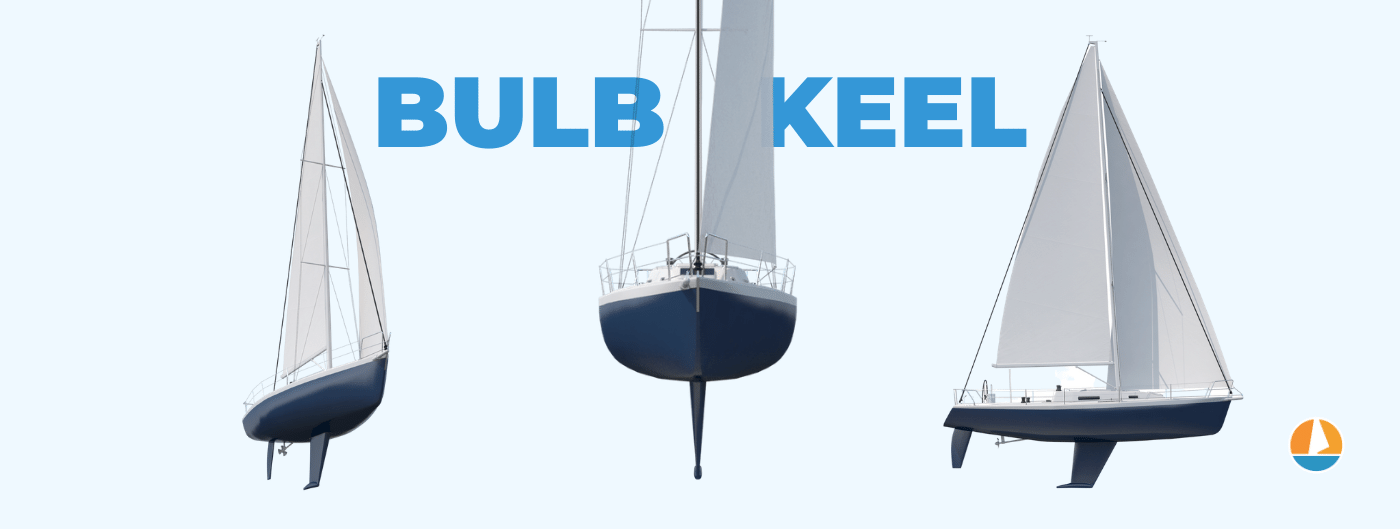
What is a bulb keel? A bulb keel is a high-aspect-ratio fin keel with additional ballast at the end, which generally has a bulb or teardrop shape. This ballast improves stability and utilizes the distance between force and counterforce as a lever. This design reduces the need for a deep fin, resulting in a shoal draft.
By placing the weight at the largest possible distance from the force on the sails, you need relatively little extra weight for the same reduction in heel, making bulb keels very effective for cruising.
This design reduces the wetted area while increasing the weight of the keel just slightly, which increases sailing comfort big time.
Example sailboats with a bulb keel:
- Bavaria B/One
- Beneteau First 24
Fixed keel Good for racing Can be beached

What is a bilge keel? A bilge keel is a twin keel which uses double fins, allowing the boat to be beached and rest on its keel upright. Bilge keels have double the wetted surface, which increases comfort and directional stability while decreasing heel. Modern bilge keels often provide decent windward performance, thanks to better design.
The bilge keel does sacrifice speed compared to the fin keel but doesn't necessarily offer worse performance overall. Older designs performed considerably worse than other keels and were especially slow.
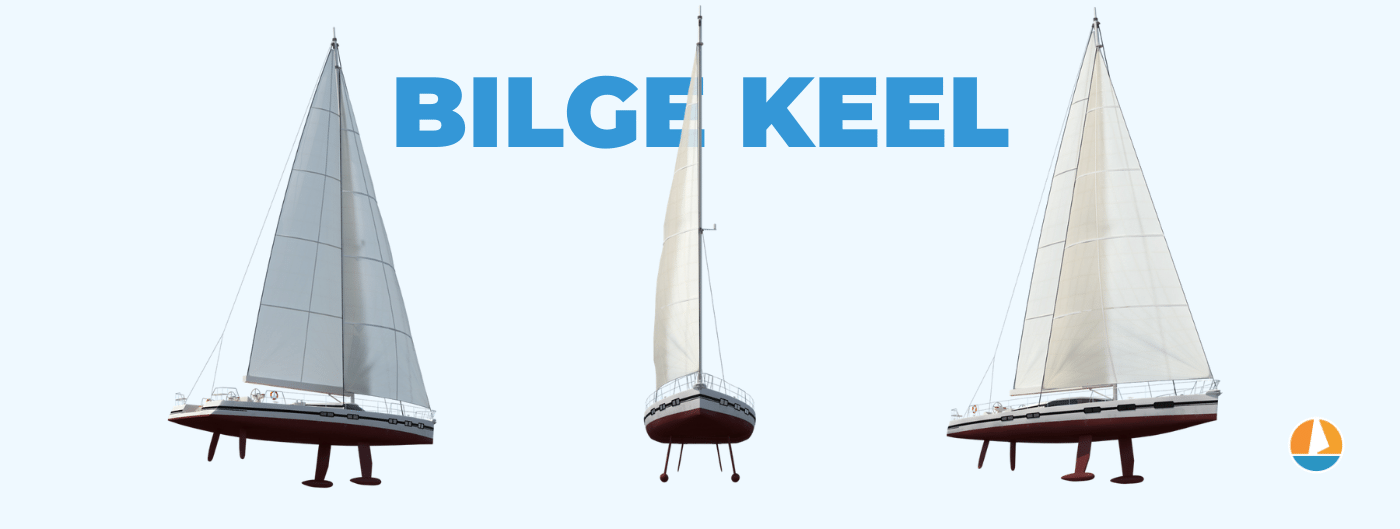
Bilge keels have some major advantages over full keels and fin keels. The most important is that the boat can be beached, making it a popular design in tidal waters. Bilge keels are especially common along the British coastline, where fishermen keep their boats in tidal harbors.
Another major advantage is that the boat can be stored resting on its keels, making dry storage and maintenance a lot easier.
Of course, there are many more pros and cons to the bilge keel , which we go into here.
Example sailboats with a bilge keel:
- Dufour Dynamique 62
- Hunter Duette
- Patagonia Patago 39
- Macwester 27
Lifting keel Good for daysailers Versatile

What is a centerboard? A centerboard is a type of retractable keel that rests on a hinge and can be lowered through a slot in the hull. It folds out like a pocket knife and allows you to increase or reduce the draft of the boat. Centerboards are mostly used on small fishing boats.
The centerboard is a very versatile keel type, allowing you to have both a very shoal draft for inland waters, as well as steadying the boat and reducing heel for larger bodies of water, or even oceans.
I've sailed a Cornish Crabber with a centerboard for a week, and while we stayed inland, having the option to increase the keel depth really came in handy when crossing the IJsselmeer (a former sea in The Netherlands).
There's more to the center
Olaf Roethele
https://www.theyachtmarket.com/en/new-boats/cornish-crabbers/adventure-17/218/
My name is Olaf and I am the owner of a Cornish Crabber 17 Adventure boat.
I would like to ask you if you can imagine to install on this boat a Torqeedo 2.0 Pod motor? Therefore i guess a modification of the keel/skeg is necessary ?!
Best regards from Uruguay,
You completely missed the hybrid planing/water-ballast keel of the Macgregor range
Thanks a lot for this explanation
Roger Bannon
Very well written article which provides an excellent guide for us small wooden boat builders. Thanks.
Leave a comment
Own your first boat within a year on any budget.
A sailboat doesn't have to be expensive if you know what you're doing. If you want to learn how to make your sailing dream reality within a year, leave your email and I'll send you free updates . I don't like spam - I will only send helpful content.
Ready to Own Your First Boat?
Just tell us the best email address to send your tips to:
- New Sailboats
- Sailboats 21-30ft
- Sailboats 31-35ft
- Sailboats 36-40ft
- Sailboats Over 40ft
- Sailboats Under 21feet
- used_sailboats
- Apps and Computer Programs
- Communications
- Fishfinders
- Handheld Electronics
- Plotters MFDS Rradar
- Wind, Speed & Depth Instruments
- Anchoring Mooring
- Running Rigging
- Sails Canvas
- Standing Rigging
- Diesel Engines
- Off Grid Energy
- Cleaning Waxing
- DIY Projects
- Repair, Tools & Materials
- Spare Parts
- Tools & Gadgets
- Cabin Comfort
- Ventilation
- Footwear Apparel
- Foul Weather Gear
- Mailport & PS Advisor
- Inside Practical Sailor Blog
- Activate My Web Access
- Reset Password
- Pay My Bill
- Customer Service

- Free Newsletter
- Give a Gift

How to Sell Your Boat

Cal 2-46: A Venerable Lapworth Design Brought Up to Date

Rhumb Lines: Show Highlights from Annapolis

Open Transom Pros and Cons

Leaping Into Lithium

The Importance of Sea State in Weather Planning

Do-it-yourself Electrical System Survey and Inspection

Install a Standalone Sounder Without Drilling

When Should We Retire Dyneema Stays and Running Rigging?

Rethinking MOB Prevention

Top-notch Wind Indicators

The Everlasting Multihull Trampoline

How Dangerous is Your Shore Power?

DIY survey of boat solar and wind turbine systems

What’s Involved in Setting Up a Lithium Battery System?

The Scraper-only Approach to Bottom Paint Removal

Can You Recoat Dyneema?

Gonytia Hot Knife Proves its Mettle

Where Winches Dare to Go

The Day Sailor’s First-Aid Kit

Choosing and Securing Seat Cushions

Cockpit Drains on Race Boats

Rhumb Lines: Livin’ the Wharf Rat Life

Re-sealing the Seams on Waterproof Fabrics

Safer Sailing: Add Leg Loops to Your Harness

Waxing and Polishing Your Boat

Reducing Engine Room Noise

Tricks and Tips to Forming Do-it-yourself Rigging Terminals

Marine Toilet Maintenance Tips

Learning to Live with Plastic Boat Bits
- Sailboat Reviews
A Look at Sailboat Design: Fin Keels vs. Full Keels
Details like keel design count when considering cruising sailboats..

Photos by Ralph Naranjo
When a keel tears away from a sailboats hull, it makes the loss of a rig or rudder seem like a minor inconvenience. History shows that its an uncommon occurrence, but because we now annually hear of such incidents, weve decided to take a closer look at keels and see what keeps the ballast where it belongs.
The International Sailing Federation (ISAF) Offshore Special Regulations devotes pages to helping sailors prevent and respond to a crew overboard incident. There is nothing about how to handle the loss of a keel or ballast bulb. Some might say this is because such occurrences are so infrequent, while others note that, if youre still upright once the ballast breaks off theres not much you can do other than blow the sheets, douse the sails as quickly as possible and attempt to stop any leaks.
When solo sailor Mike Plants Open 60 Coyote lost her lead bulb in 1992, Mike was lost at sea. Other adventure-sailors have survived near instantaneous capsize precipitated by keel loss. In 2003, round-the-world racer Tim Kent and his crew capsized when Everest Horizontal lost its ballast on the way back from Bermuda. US Sailing Safety at Sea Committee Chairman Chuck Hawley was aboard the racing sloop Charlie, on the way back from Hawaii, when a loud groaning sound led to a deep heel as the lead peeled away from the keel bolts and ballast headed straight to the bottom. This encounter at least had a happy ending thanks to the crews quick actions to douse sail. Apparently the keel had been cast with too little antimony (an additive that causes lead to become a harder alloy). The point here is that keeping the keel attached is as important as keeping the crew safely on board. And for the offshore monohull sailor, preventing a keel loss, like preventing crew overboard, requires some informed forethought.
A ballast keel on a sailboat is a classic example of potential energy poised in a balancing act. The buoyancy of the hull itself offsets the effect of thousands of pounds of lead or iron. At rest, gravitys attraction for the dense material strains against the buoyancy of the hull, and the adjacent garboard region is continuously in tension. Few sailors spend much time contemplating how keel bolts corrode and what cycle-loading does to the resin matrix comprising the garboard region just above the ballast. What is apparent, is that the attachment material, whether it be wood, metal or fiber reinforced plastic (FRP), must be able to support a mass of metal weighing as much as a small truck-and do so day in and day out for decades.
Underway, every tack causes the rig and sailplan to try to lever this ballast package free from the hull. And when the helmsman starts daydreaming about lobster for dinner and wanders off course onto a granite ledge Down East, the keel designed to handle sailing loads takes it on the chin. Its easy to see why experienced designers and builders lose sleep over their decisions about keel shape, structure, and what kind of safety factor should be built into the structure.
Its surprising to discover that with better materials and computer-aided design, we still hear about incidents such as the Rambler capsize in the 2011 Fastnet Race (PS, May 2012). Just as significant is a spate of smaller race boat keel-ectomies that have caused ISAF to send out a cautionary note to sailors around the world, and introduce new structural standards for race boats. Keeping the ballast attached to the boat involves an awareness of a chain-like set of failure points. And one of the most difficult decisions each designer must make is how to marry foil efficiency with a structural safety margin that covers the boats intended usage and the unintended use of the keel as a depth sounding device.
For decades, engineers and naval architects have had to contend with some racing sailors Icarus-like quest-a trend that prioritizes shedding weight and making the keel foil a long, thin appendage with a high-aspect ratio. Though not quite a flight toward the sun with wings made of wax and feathers, some race-boat scan’tlings walk a fine line between lightweight and structural failure. The challenge lies in attaching a lead bulb on a high-tensile steel foil to a lightweight, high-modulus, FRP hull. Interconnecting the dense metallic ballast to the lower-density foam/fiberglass hull structure is a true engineering puzzle. Part of the challenge lies in the dissipation of point loads (confined to a relatively small area) and how to handle the resulting stress risers. A stress riser is the point at which theres an abrupt change in a materials flexibility, such as where a stiff, fin keel meets the more elastic hull bottom. In FRP composites like those found in a balsa-cored hull, stress risers are a likely place for delamination to occur. Over time, these can result in the failure of the FRP composite.
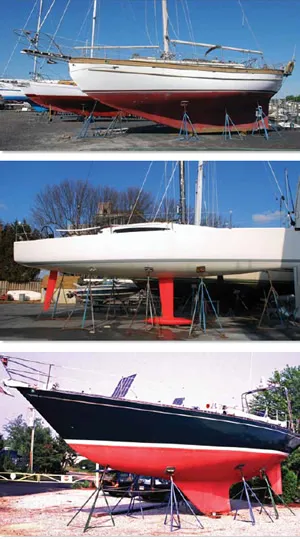
The see-saw effect of the keel counteracting a vessels righting moment is a mathematically predictable energy transfer. Even the effect of groundings such as those that turn hull speed into a dead stop can be quantified. But its the cumulative effect of fatigue (localized structural damage caused by cyclical loading) and corrosion that are harder to pin down.
The term allision refers to hitting a fixed object such as a granite ledge or coral reef. Naval architects analyze the energy transfer and evaluate the stress and strain characteristics that occur. The recognition that the keel-to-hull connection must endure even more punishment than is doled out in heavy-weather sailing episodes is at the heart of how structural specs are devised.
Designers also must consider the jack-hammer-like pounding of a keel on a reef in surf, and realize that there are limits to the abuse a keel and hull can endure. With this in mind, its reasonable to assume that sailboat keels should be built to handle sailing induced loads for decades. It is the extra safety factor built into the boat that defines what happens when the sandbar is a rock pile.
What is harder to anticipate are the unusual encounters that can inflict serious damage to the keel connection. Take, for example, what happens when a sailboats deep fin keel is wedged in a rocky cleft and a good Samaritan with a big powerboat attempts to pivot the sailboat using a line attached to the bow. The distance from the keels vertical centerline to the stem may be 20 feet or more, and with a couple of thousand pounds of bollard pull, the 20-foot lever arm creates a rotary force that can spike to 40,000 foot-pounds or more. This level of torque goes well beyond what most designers and builders model as sailing loads, and its likely to seriously damage the boat.
In plain low-tech talk, extreme fin keels provide a valuable performance edge, but they come with their own set of downsides that every owner needs to be aware of. In essence, the more radical the keel shape, the better the crew must navigate.
A couple of decades ago, PS Technical Editor Ralph Naranjo ran a boatyard and had a client who liked to cut the corners during Block Island Race Week. His first spinnaker reach into a granite boulder stopped the boat and shoved the companionway ladder upward six inches. This underscored how an allision that causes the keel to stop abruptly transfers a shock wave through the entire hull. The resulting compression cracked several transverse members in the New York 40 and damaged the core in the canoe body near the garboard.
The FRP repairs had to be tapered and all delamination problems resolved. The moderate-aspect-ratio lead fin keel absorbed a good deal of the blunt trauma. Judging from the cannonball-size dent on the leading edge of the lead keel, it was clear that the impact was significant. The dent offered grim proof of the advantage of having soft lead instead of steel as keel ballast. New floor frames were added, the broken transverse members were replaced, and the boat was off and sailing.
The next season, the boat had another Block Island encounter, and only because the Petersen-designed New York 40 was a pretty ruggedly built boat was a second repair even considered. This time, an equally violent keel-to-hull trauma came from an on-the-wind encounter with a different rock. The extent of the delamination was greater than it had been in the first go round, and more extensive core removal and repair was required. The keel was dropped in order to check the bolts and the garboard. With the bilge fully opened for the FRP repair work, the repair crew made a pattern of the canoe body dead rise and fore and aft contour. As the glass work was being completed, they fabricated a stainless-steel grid that would spread keel loads fore and aft as well as athwartship. The new grid reinforced the keel attachment and returned the sloop to the race course.
Afterward, Naranjo and the owner discussed the details of the repair, including the possibility of hidden, widespread damage from the two groundings. These included the dynamic loads imposed upon the chainplates and rigging, the likelihood of hidden resin-cracking, and potential for more delamination and core shear linked to the torque induced by the accident. In short, any serious allision causes overt and hard-to-detect damage far from the actual impact zone, and these can lead to more problems down the road. When buying a used boat, look for a good pedigree, but also look for signs of previous blunt-force trauma. A good surveyor will be skilled in such structural forensics, and he or she will do more than comment on the gelcoat shine.
In the early days of wooden ships and iron men, a lack of dense metal ballast put less point-loading in the garboard region of the hull. Bilges free of cargo were filled with rocks or tighter-fitting granite blocks cut for more compact stacking. The principal of ballasting a vessel was to lower her center of gravity (CG) and create both an increase in the righting arm and a greater righting moment to offset the heeling moment created by the rig and sail plan. The keel also helped lessen leeway and would evolve into an appendage that added lift.
Movable ballast had a few downsides, not the least of which was its propensity to move in the wrong direction at the very worst moment. Even small boat sailors have found out what can happen to unsecured pigs of lead ballast when the boat heels far enough over for gravity to overcome friction. Whether stones, lead, movable water ballast, or a can’ting keel are used to augment the boats righting moment, a sailor must anticipate the worst-case scenario. This is when the weight ends up on the leeward side of the boat and a bad situation can turn into a real catastrophe. Fixing or locking ballast in place, controlling the volume of water put in ballast tanks, and limiting the can’ting keels range are sensible compromises.
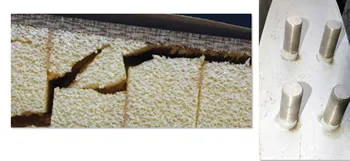
Internal ballast, the ballast inside a keel envelope thats contiguous with the hull, is still seen in many new boats. Island Packet is an example of a builder has stuck with this traditional approach of securing ballast without using keel bolts. Its a sensible design for shoal-draft cruisers, and the upsides are numerous. These high-volume, long-range cruisers arent encumbered by the demands prioritized by light displacement, performance-oriented sailors. Instead, Island Packets combine a rugged laminate and a long-footed, shallow-draft keel. This may not place the lead or iron ballast as deep as the tip of a fin keel, but it does keep the all-important CG low enough to deliver a powerful righting moment along with shoal draft.
In order to deliver the high angle of vanishing stability (AVS) also known as limit of positive stability (LPS), designer Bob Johnson puts what amounts to an internal bulb in the very lowest point in the boat. This long slug of iron or lead (depending on the model) is then covered by Portland cement, locking it in the Island Packets monocoque structure. The result is a contiguous FRP structure spreading keel loads efficiently over a considerable amount of hull skin. Keel bolts and the infamous garboard seam are completely eliminated. This approach to sailboat keel design dates back to the Rhodes Bounty II and other prototypes in the production world of sailboats. Now over 50 years old, many of these boats continue to have a tenacious grasp on the lead or iron that they hold.
Encapsulated iron ballast is much less desirable than encapsulated lead, and its sad to see builders skimp on this. Iron, or even worse steel, has been used in many Far Eastern encapsulated keels. It works as long as water and the resulting oxidation havent caused expansion and cracking of the seal. Lead is also denser than ferrous metal, and therefore, the same amount of ballast will have a smaller volume and create less drag.
Encapsulated ballast starts to be less appealing as keels become more fin-like and high-aspect ratio. The reason for this is that the geometry of the support changes, focusing more load on less area of the hull. As hull shapes evolved into canoe underbodies with hard turns in the bilge, and fin-like keels became thinner, deeper, and with shorter chord measurements (thickness), the concept of encapsulated keel became impractical. The Cal 40, Ericson 39, Pearson 365, and a long list of similar genre boats signified the end of an era when performance racer/cruisers would be built with encapsulated ballast.

External Ballast
Performance-oriented sailors and race-boat designers quickly latched on to hull shapes marked by deep-draft, foil-shaped, high-aspect ratio fin keels. From the late 60s to whats currently glowing on CAD screens in designer offices around the world, keels have grown deeper and shorter in chord length, and bulb or anvil-like tips have grown more and more common.
The design development was sound, lift was enhanced, and deeper-not longer-became the answer to getting to windward faster. The challenge was not only in designing an efficient shape, it lay in creating an attachment means that minimized foil flex and twist, retained the low drag coefficient, and still had the ability to withstand an occasional, albeit modest, grounding.
During this same period, marine surveyors and boatyard techs began to see moderate groundings result in major structural problems. The classic example was the allision that produced a moderate dent in the lead at the leading edge of the keel tip. In many cases, further inspection revealed cracks radiating outward from a knot meter or depth sounder mistakenly placed just ahead of the keel. An even closer look often revealed grid damage or a cracked bulkhead just aft of the last keel bolt. Like the New York 40 mentioned earlier, this was a result of a shock wave radiating through the hull structure. As we learned in Mrs. McCrearys science class, Bodies in motion tend to stay in motion, unless acted on by an equal and opposite force. Fin keel sailboats encountering abrupt energy transfers,tend to endure more damage than their long-keel counterparts.
A forensic look at the Achilles heel of external ballast highlights a few pitfalls. First the good news: Lead absorbs impact well, consuming much of the imparted energy through deformation. However, the translation of the remaining energy from the metal keel foil and keelbolts into an FRP hull is where we often find stress risers, and point loading linked to material and hull shape changes. The near right-angle interface between a modern sailboats canoe body and its deep fin keel is a classic load-path hotspot. In the old days, fiberglass techs spoke of oil-canning or the dimpling of a large section of the garboard as tacks were swapped.
Today Naval Architects use Finite Element Analysis (FEA) to better engineer hull structure. Colorized graphics pinpoint load concentration, glowing bright red in the region where the keel joins the hull, the epicenter of the oil-canning. A common solution to coping with this high-load focal point, is to eliminate core in the region and to gradually increase the unit schedule (layers of FRP), or to add an internal FRP grid. Maximum thickness of a keel stub is located where the keelbolts penetrate the stub. In this region, the solid glass thickness is often equal to the dimension of the keel bolt diameter or even greater.
Laminate thickness at the keel bolts is only part of the equation. Just as important is how the transition to the general hull laminate transpires. A bullet-proof keel stub that immediately transitions into a core hull comprising two units of laminate on each side of the panel creates whats equivalent to a tear-on-the-dotted-line weakness. Transitions that involve sharp angles and marked differences in panel strength require a well-reinforced taper that spreads loads gradually rather than abruptly.
Occasionally, we see massive metal frameworks used in the bilge as support for keel bolts; these structures need to be carefully engineered to not create the same hard spot fracture points. When carefully tapered in order to gradually introduce more flex, the problem is abated, as it was in the repair of the New York 40 mentioned earlier. The stainless-steel grid built to support the keel loads incorporated a gradual decrease in stiffness to the framework. The keel was carefully mated to the underside of this grid to ensure full contact (See Keel Bolt Repair Options, online). As a result, the crew relieved the hard spots at the end points and made the transition to the more flexible FRP hull less dramatic.
For cruisers, the take-away lesson is that extra reinforcement, a long garboard keel-to-hull interface, and internal transverse and longitudinal reinforcement really do pay off. Keep in mind that the extra weight this entails is all below the center of gravity and contributes to the secondary righting moment as well as keeping the water out.
This is a big departure from the way many modern production boats are built. They carry a skimpy ballast ratio of 30 percent or less, have less structure to support the keel and are not designed to handle unintended cruising consequences. There are exceptions, and its worth looking at the keel design and structure of the Navy 44 Mark II and the USCG Leadership 44 (see PS, August 2012). These boats utilize external ballast and are examples of rugged keel attachment. They have a relatively long keel-to-stub garboard junction, the laminate scan’tling meets American Bureau of Shipping recommendations, and both utilize an overabundance of 316 stainless-steel keel bolts and an FRP grid to keep the keel where it belongs.
There are many reasons why were seeing more keel problems today. On one hand, light, fast, race-boat design pushes the envelope, and thats probably OK. But when mainstream racer/cruisers start to suffer from lead loss, too much of one good thing (high-aspect ratio) and too little of another good thing (reinforcement) can begin creeping into design and construction.
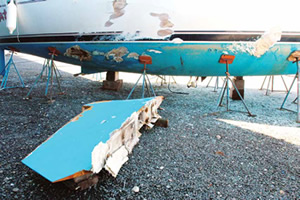
RELATED ARTICLES MORE FROM AUTHOR
Leave a reply cancel reply.
Log in to leave a comment
Latest Videos

Bahamas Travel Advisory: Cause for Concern?

Island Packet 370: What You Should Know | Boat Review

How To Make Starlink Better On Your Boat | Interview

Catalina 380: What You Should Know | Boat Review
- Privacy Policy
- Do Not Sell My Personal Information
- Online Account Activation
- Privacy Manager
Sailboat Keel Types: A Comprehensive Guide
by Emma Sullivan | Jul 25, 2023 | Sailboat Maintenance
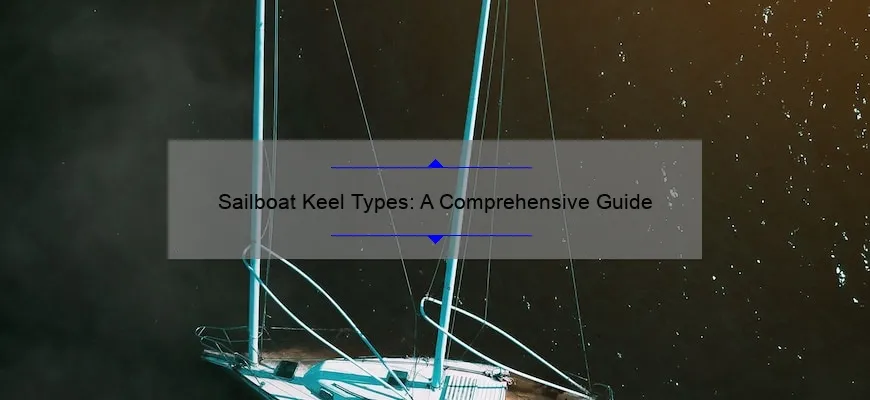
Short Answer: Sailboat Keel Types
There are several types of sailboat keels, including full keel, fin keel, wing keel, bulb keel, and daggerboard. Each type provides different characteristics in terms of stability, maneuverability, and performance. Sailors choose the keel type based on their sailing preferences and intended usage of the boat.
Understanding Sailboat Keel Types: A Comprehensive Guide
As any avid sailor can testify, understanding the different sailboat keel types is paramount to a successful and pleasurable sailing experience. A sailboat’s keel acts as its foundation, providing stability, preventing sideways drift, and enhancing overall performance. With various keel options available in the market, it can be quite overwhelming for newcomers or even seasoned sailors to grasp the nuances of each type.
In this comprehensive guide, we aim to unravel the mystery surrounding sailboat keels. From traditional full keels to modern fin keels and everything in between, let’s embark on a journey through their characteristics, advantages, disadvantages, and their impact on sailing dynamics.
1. Full Keel:
Let’s start with the old-school favorite – the full keel. As its name suggests, this keel extends from bow to stern and offers exceptional stability due to its large surface area below the waterline. The long length also promotes tracking ability – keeping your boat moving in a straight line without much effort. Although typically found on older vessels or those designed for long-distance cruising rather than racing, full keels excel in handling heavy weather conditions and provide an overall smooth ride through choppy waters.
However, there is a trade-off when it comes to maneuverability. The deep draft can restrict access to shallower areas and make tacking (changing direction by turning into the wind) more demanding. Additionally, due to their shape and size, full keels may sacrifice some speed potential compared to their sleeker counterparts.
2. Fin Keel:
Enter modernity – the fin keel revolutionized sailing dynamics when it was introduced decades ago and remains one of today’s most popular choices among sailors seeking performance-oriented vessels. This relatively narrow (or “fin-like”) appendage protrudes deep below the hull and serves as both a counterbalance against sideways forces and a pivot point for agile maneuvers.
The fin keel’s streamlined design offers enhanced speed, better upwind capabilities, and improved responsiveness. Sailors planning to participate in racing events or seeking a thrill-seeking sailing experience often favor this type of keel. Moreover, the reduced draft allows for access to shallower waters – perfect for exploring coves or venturing closer to shore.
However, it’s essential to recognize that while fin keels excel in speed and maneuverability, stability can be compromised. A narrow base may result in more heel (tilting) when exposed to strong crosswinds, demanding careful attention from sailors. Furthermore, grounding risks are higher due to the shallower depth.
3. Winged Keel:
For those looking for a middle ground between full keels and fin keels, winged keels provide an intriguing compromise. Originating from the America’s Cup yacht races during the 1980s and 1990s, these unique designs feature additional horizontal wings near the bottom of the main keel shaft.
Their purpose? To improve stability by effectively increasing the lateral surface area without significantly increasing draft. This innovative approach enhances windward performance while maintaining maneuverability and reducing heeling.
4. Bulb Keel:
The bulb keel is another darling of modern sailboat design – especially prevalent among cruising boats aiming for optimal balance between cruising comfort and performance capabilities. These keels utilize a large torpedo-shaped bulb at their base, which concentrates weight lower down for increased stability while reducing overall drag.
Bulb keels offer excellent upwind performance, advanced tracking ability, and minimal lateral movement when navigating waves or choppy seas – all qualities keenly sought after by bluewater cruisers or liveaboard sailors longing for long voyages with maximum safety and comfort.
5. Swing Keel/Centreboard:
Now let’s discuss something adaptable – swing keels (also known as centerboards). This versatile option provides flexibility in both deep water sailing and shallow anchorage areas. Swing keels can be raised or lowered as needed, allowing sailors to decrease draft in shoal waters and subsequently improve maneuverability, while also providing deeper draw for enhanced upwind performance on open seas.
The ability to retract the keel provides opportunities for exploring hidden bays, rivers, or other areas inaccessible to boats with fixed keels. However, this convenience comes with a downside. The mechanism required for raising and lowering the keel may add weight to the boat and increase maintenance requirements.
To conclude, understanding sailboat keel types is crucial when choosing a vessel that aligns with your sailing goals and needs. Whether you prioritize stability, speed, maneuverability, or versatility depends on where and how you envision your nautical adventures unfolding. We hope this comprehensive guide has shed light on the various options available in their witty and clever explanations – setting you on a course towards well-informed decision making when it comes to sailboat keels.
Choosing the Right Sailboat Keel Type for Your Needs: Step-by-Step Process
Purchasing a sailboat is an exciting venture, but it can also be quite overwhelming when faced with the multitude of options available. One crucial decision to make is selecting the right keel type for your sailing needs. The keel plays a vital role in determining the stability, performance, and maneuverability of your sailboat. Hence, understanding the various keel types and their features will help you make an informed decision. In this blog post, we will take you through a step-by-step process to choose the ideal sailboat keel type tailored to your specific requirements.
Step 1: Assess Your Sailing Goals Before delving into technical details, it’s important to assess your sailing goals and preferences. Are you looking for a vessel suitable for racing or one geared towards leisurely family outings? Do you plan on venturing into shallow waters or embarking on long offshore trips? Determining your primary sailing objectives will provide essential insights that shape your keel choice.
Step 2: Understand Different Keel Types Next, let’s explore the common types of sailboat keels:
1. Fin Keel: Also called a modern fin keel with a bulb, this design offers excellent performance and stability even in strong winds. It reduces drag significantly due to its sleek profile while enabling better upwind pointing ability.
2. Full Keel: A traditional full keel provides exceptional directional stability but may compromise maneuverability. Ideal for offshore cruising, it offers reduced rolling motion and enhanced safety during heavy weather conditions.
3. Wing/Daggerboard Keel: This versatile configuration combines aspects of both fixed keels and centerboards/daggerboards by retracting partially or completely when needed. This allows maximum flexibility when navigating shallow waters or adjusting for varying wind conditions.
4. Bilge Keel: Employed mainly in smaller boats, bilge keels consist of two shorter keel sections placed on either side of the hull. This design enhances stability at rest and allows for grounding without damage.
Step 3: Assess Pros and Cons Now that you understand the different keel types, it’s time to evaluate their pros and cons based on your sailing objectives:
– Fin Keel: Pros: Excellent upwind performance, great stability, higher speed potential. Cons: Vulnerable in shallow waters, reduced directional stability when not under sail.
– Full Keel: Pros: Superior directional stability, excellent resistance to leeway (sideways movement), better roll dampening in heavy conditions. Cons: Lower maneuverability in tight spaces or strong winds, reduced speed potential.
– Wing/Daggerboard Keel: Pros: Versatile and adaptable to changing conditions, improved windward performance when centerboard is down. Cons: Higher maintenance requirements compared to fixed keels.
– Bilge Keel: Pros: Enhanced stability at rest, shallow draft capability for exploring shallower waterways. Cons: Reduced pointing ability and performance, may experience more leeway compared to other keels.
Step 4: Seek Expert Advice If you’re still unsure about which keel type aligns best with your needs after assessing the pros and cons, consider reaching out to a knowledgeable yacht broker or marine expert. Their expertise can assist you in making an informed decision based on factors such as boat size, intended usage area (inland lakes vs. open ocean), and personal preferences.
Step 5: Test Sailboats & Consider Trade-offs Once you have narrowed down your options based on previous steps’ evaluation criteria, take the opportunity to test-sail different boats embodying varying keel configurations. Experiencing firsthand how each sailboat handles will give you valuable insights into their capabilities and limitations. Consider trade-offs regarding aspects like speed versus maneuverability or comfort versus stability before making your final decision.
In conclusion, selecting the correct sailboat keel type requires careful consideration and an understanding of your sailing goals. By following this step-by-step process, you’ll be equipped with the knowledge needed to choose a sailboat that perfectly aligns with your needs. Remember, there’s no one-size-fits-all answer – it’s about finding the ideal balance between performance, stability, maneuverability, and suitability for your intended purpose.
Exploring Different Sailboat Keel Designs: A Closer Look at the Options
When it comes to sailing, the design of a sailboat’s keel plays a critical role in its performance and overall handling. A well-designed keel can greatly enhance a boat’s stability, maneuverability, and efficiency on the water. With various options available in the market, it’s important to understand the differences and benefits associated with each type of sailboat keel design.
One commonly found keel design is the full keel. As its name suggests, this type extends from the bow to the stern, providing extensive support and stability to the boat. Full keels are known for their ability to track straight in rough conditions and offer excellent resistance against sideways forces such as wind or waves. This makes them well-suited for long-distance cruising and offshore sailing adventures. Additionally, full keels often have a shallower draft which allows access to more shallow waters, making them versatile for exploring coastal areas.
On the other end of the spectrum is the fin keel design. Unlike full keels, fin keels are shorter and narrower, located primarily beneath the boat’s center of gravity. This leads to improved maneuverability and allows sailors to make tighter turns more easily. Fin keels also tend to have a deeper draft which provides better upwind performance by reducing side slippage while maintaining stability.
A variant of fin keels is bulbous or winged-keels. These designs feature weighted bulbs at their lower ends, enhancing stability while still allowing for efficient upwind sailing. The added weight at the bottom reduces heeling angles during strong winds while optimizing lift characteristics under sails.
For those seeking enhanced speed capabilities with reduced drag underwater, there are high-performance sailboats that incorporate daggerboard or centerboard designs. Daggerboards slide vertically through slots on either side of a boat’s hull when deployed during sailing operations but can be retracted when not needed. They offer tremendous flexibility due to adjustable positions based on wind conditions—providing sailors an opportunity to optimize lift and reduce drag accordingly. This keel design is often favored by competitive racers who prioritize speed and agility over stability.
Lastly, a popular modern innovation is the canting keel. This keel design consists of a fin that can swing out to either side of the boat via a mechanism controlled by hydraulics or other means. The ability to adjust the angle of the keel allows for advanced maneuvering and optimizing performance based on current conditions. Canting keels are commonly found in high-performance racing yachts where every degree counts in gaining a competitive edge.
When deciding on the most suitable sailboat keel design, it ultimately depends on your intended use, sailing goals, and personal preferences. Cruisers may lean towards full or bulbous keels for their stability and versatility, whereas racers seek the swift performance offered by fin or daggerboard designs.
Whichever sailboat keel design you choose, understanding its characteristics and how it aligns with your sailing objectives is vital. Consulting with experienced sailors or marine professionals can help you make an informed decision when selecting your dream sailboat—a vessel that will carry you gracefully through all your aquatic adventures.
Frequently Asked Questions about Sailboat Keel Types: Get Answers Here!
Welcome to our blog where we aim to satisfy your curiosity about sailboat keel types! Whether you’re a seasoned sailor or just getting started in the world of sailing, understanding the different keel designs is crucial for optimizing your boat’s performance on the water. In this article, we’ve compiled some frequently asked questions to provide you with comprehensive answers and shed light on this important aspect of sailboats. So let’s dive in!
1. What is a sailboat keel? A sailboat keel refers to the underwater structure attached at the bottom of the hull that provides stability and prevents excessive sideways drift. It essentially acts as a counterbalance against wind forces acting on the sails, allowing the boat to maintain an upright position.
2. How does a sailboat keel work? The primary function of a keel is to create lift in the water as it moves through it. This lift opposes and balances the lateral forces generated by wind pressure on sails, keeping the boat from being pushed sideways or capsizing. Additionally, by increasing drag and resistance, it also helps prevent excessive speed or slipping sideways when sailing upwind.
3. What are different types of sailboat keels? There are various sailboat keel designs tailored for specific purposes:
– Fin Keel: The fin keel is one of the most common types characterized by its long, narrow shape extending vertically downwards into the water beneath the boat. It offers excellent upwind performance while minimizing drag, making it ideal for racing or competitive sailing.
– Wing Keel: A wing keel features two smaller fins (wings) positioned near its base instead of one central fin like traditional fin keels. This design aims to improve stability while reducing draft depth, enabling boats to navigate shallower waters without sacrificing performance.
– Bulb Keel: Bulb keels have an additional weighted bulb located at their lower end designed to enhance stability and reduce drag even further. These keels are often found on performance cruisers or racing yachts, offering enhanced righting moments and improved overall sailing performance.
– Full Keel: On the other end of the spectrum, full keels extend along the entire length of the boat’s bottom. They provide excellent stability but tend to sacrifice maneuverability and speed in favor of increased seaworthiness, making them well-suited for long-range cruising or bluewater sailing.
4. Which sailboat keel type is best for me? The ideal keel type depends on your specific sailing needs and preferences. If you’re primarily focused on racing or want a higher level of maneuverability, a fin keel with a bulb might be more suitable. However, if you prioritize stability and plan to embark on extended journeys or offshore passages, a full keel could be an excellent choice.
5. Can I modify my sailboat’s keel? Modifying a sailboat’s keel is generally not recommended as it can significantly alter the vessel’s balance and stability characteristics. Unless you have extensive knowledge and expertise in naval architecture, it’s best to consult with professionals before considering any modifications.
We hope this FAQ section has answered some burning questions about sailboat keels! Choosing the right type for your vessel will greatly impact your sailing experience, so take the time to research and understand each design’s advantages and limitations. Whether you’re aiming for speed, stability, or versatility – happy sailing!
Benefits and Drawbacks of Various Sailboat Keel Types: What to Consider
When it comes to choosing the perfect sailboat for your seafaring adventures, one important factor that often gets overlooked is the type of keel. A sailboat’s keel plays a crucial role in stability and maneuverability, making it essential to carefully consider the benefits and drawbacks of various keel types before making a decision. In this blog post, we will explore these different types and help you understand what factors should be considered.
1. Fin Keel: Fin keels are among the most common types found on modern sailboats. They feature a deep, narrow profile that extends vertically from the hull’s bottom. One significant benefit of fin keels is their excellent upwind performance due to their low drag and efficient water flow around them. This allows for better pointing ability and higher speeds when sailing close to the wind. However, fin keels also have some drawbacks worth considering. Due to their depth, they may limit access to shallower waters and make grounding more hazardous. Additionally, their narrow profile can result in reduced stability compared to other keel types in rough conditions or during sudden gusts of wind.
2. Wing Keel: Wing keels are designed similarly to fin keels but have two small wings extending horizontally from either side of the main fin. These wings increase the overall surface area of the keel, providing additional lift and improved stability compared to fin keels. One significant benefit of wing keels is their ability to handle shallow waters more effectively than other types without compromising performance significantly. The extra surface area also helps minimize leeway or sideways drift when sailing downwind. Despite these advantages, wing keels may present some trade-offs. The enlarged wings can induce additional drag, slightly reducing speed potential in certain conditions such as upwind sailing or going against a strong current.
3. Centerboard or Swing Keel: Centerboards or swing keels offer versatility by providing both draft adjustability and easy access to shallow waters. These keels are retractable, allowing them to be raised when navigating in shallow areas and lowered for enhanced stability in deeper waters. The main benefit of a centerboard keel is the ability to explore more secluded areas that may be inaccessible with fixed keels. They also offer better windward performance than wing or fin keels when fully deployed. However, the design limitations of centerboards can result in reduced overall lateral stability compared to fixed keels. Additionally, the mechanism used for raising and lowering the centerboard can be prone to maintenance issues or potential failure if not properly maintained.
4. Full Keel: Full keels, also known as long keels, are characterized by their extended length from bow to stern. This type provides optimal directional stability and contributes greatly to reducing leeway and weather helm even in challenging conditions. One of the primary benefits of full keels is their seaworthiness and ability to maintain course easily while cruising offshore. They tend to track well and inspire confidence in rough seas. Nevertheless, full keels have some drawbacks that should be considered. Due to their larger surface area, they generate more drag than other types of keels. This additional resistance can slightly reduce speed potential, especially in light winds or when sailing against strong currents.
In conclusion, choosing the right sailboat keel type is a critical decision that requires careful consideration based on your desired sailing conditions and preferences. Each type comes with its own set of benefits and drawbacks that need evaluation depending on factors such as intended use, cruising grounds, draft requirements, and personal skill level. By understanding these nuances and making an informed choice, you can ensure an enjoyable and safe sailing experience on whichever sailboat you ultimately decide upon.
Beginners’ Guide to Sailboat Keel Types: Everything You Need to Know
Welcome aboard to our Beginners’ Guide to Sailboat Keel Types: Everything You Need to Know! Whether you’re a novice sailor or an experienced mariner looking to brush up on your knowledge, understanding sailboat keel types is essential for enjoying a smooth sailing experience. So hoist the sails and let’s dive in!
Keels play a crucial role in stabilizing sailboats by counteracting the force of wind pushing against the sails. The right keel type ensures optimal stability, maneuverability, and overall performance under various conditions. Let’s explore some of the most common sailboat keel types you’ll encounter on your seafaring adventures:
1. Full Keel: Picture yourself cruising on a classic yacht from a bygone era – chances are it has a full keel. This traditional design encompasses a long, deep fin that extends from bow to stern, providing excellent directional stability. Full keels are ideal for longer voyages as their heavy displacement reduces rolling motion, making them resilient in rough seas.
2. Fin Keel: On the flip side of the spectrum lies the fin keel – sleek, modern, and agile. Fin keels feature a shorter but more slender profile compared to full keels, extending from just below the hull near the bow and terminating towards the stern. Their reduced surface area allows for increased speed through water while facilitating easy maneuvering and quick responsiveness.
3. Wing Keel: Imagine having wings underwater – that’s precisely what you’ll find with wing keels! These innovative designs incorporate additional extensions (wings) on either side of the main fin, increasing lateral resistance as well as stability. Wing keels offer superb shallow-water cruising capabilities, allowing sailors to explore coastal areas with ease.
4. Bulb Keel: Don’t be fooled by their name; bulb keels are anything but dull! Often seen on high-performance racing yachts or larger cruisers aiming for speed, this keel type features a lead bulb at the tip of a narrow fin. The added weight significantly lowers the boat’s center of gravity, enhancing stability and reducing heeling (sideways tilting) when harnessing strong winds.
5. Bilge Keel: If you’re looking for versatility, bilge keels are your go-to option! As the name suggests, these twin keels are positioned symmetrically on each side of the sailboat’s hull. Bilge keels provide great stability both underway and at rest while also enabling easy beaching or grounding in tidal areas. Their unique design allows for exploring shallow waters without compromising maneuverability.
As with any sailing endeavor, it’s important to remember that each sailboat keel type comes with its own set of trade-offs. Factors such as sailing conditions, intended use (racing vs. cruising), and personal preference will ultimately guide your choice.
So there you have it – a comprehensive overview of sailboat keel types to set your seafaring journey on the right course! Whether you opt for the classic elegance of a full keel or the nimble agility of a fin keel, understanding these different types empowers you to choose wisely based on your specific needs and aspirations as a sailor.
Now, all that’s left is to chart your course and let the wind fill your sails as you embark on countless exciting adventures across vast oceans or tranquil lakes. Happy sailing!
Recent Posts

- Sailboat Gear and Equipment
- Sailboat Lifestyle
- Sailboat Maintenance
- Sailboat Racing
- Sailboat Tips and Tricks
- Sailboat Types
- Sailing Adventures
- Sailing Destinations
- Sailing Safety
- Sailing Techniques

Yachting Monthly
- Digital edition

How keel type affects performance
- Chris Beeson
- December 2, 2016
James Jermain looks at the main keel types, their typical performance and the pros and cons of each

A fin keel and spade rudder configuration gives high pointing but can be sensitive on the helm Credit: Graham Snook/YM

James Jermain has tested hundreds of yachts in his 30 years as Yachting Monthly’s chief boat tester
The performance and handling of a yacht depends on many things, but perhaps the most important single feature is the shape of the hull and the profile of the keel. Over the years hulls have become shallower and keels narrower, but for many types of sailing this progression is not necessarily progress. Of the various shapes that have evolved, each has its own advantages in different circumstances. Here is a run-down of how they may fit your sort of sailing.
FIN KEEL WITH SPADE RUDDER

A low wetted surface area and aerofoil shape means speed and agility
The most common modern option, usually combined with light but beamy hulls with high freeboard.
GENERAL AND TO WINDWARD
- Low wetted surface and good aerofoil shape means good speed, high pointing and quick tacking
- Light steering
- Best designs can slice through heavy seas in reasonable comfort
- High volume, light-weight designs can be lively and tiring in heavy weather
- Flat sections can cause slamming
- Less steady on the helm, requiring more work and concentration
- Strong tendency to round-up when hard pressed
- Generally require earlier reefing
- Can be unstable when hove to
- Quick to surf and may even plane
- Can broach easily and suddenly
- Can be directionally unstable and hard to control in heavy conditions
UNDER POWER
- Handling is precise and turns tight and quick
- Some handle almost as well astern as ahead
- Limited lateral area so susceptible to beam winds at low speeds
- An unattended helm can slam over suddenly
FIN KEEL WITH SKEG RUDDER

The skeg running aft protects the rudder and improves tracking under sail and power
Similar to above but with some key differences.
- Skeg provides better support for the rudder
- Tracking under sail or power is improved
- There is less chance of damage
- More wetted surface so potentially slower
- Objects can get stuck between rudder and skeg
- Limited balancing can make helm heavier

The mass of a long keel is often more seakindly and will carry way well.
The traditional option, usually found on pre-1970s designs.
- Good tracking
- Slow, soft, comfortable motion
- Drive powerfully through short seas but can be wet
- Carry way through tacks
- Resist rounding-up
- Heave-to well
- High wetted surface area and a poor aerofoil shape, so speed reduced, tacking slow, leeway increased and pointing ability reduced
- Long ends can cause hobby-horsing
- An unbalanced hull or rig can cause heavy helm
- Track well and very resistant to broaching
- Very stable in heavy conditions
- Reluctant to surf (a mixed blessing)
- Carry way well
- Track straight
- Heavy construction can reduce vibration and noise
- Large turning circle ahead
- Unpredictable and hard to control astern
LIFTING OR SWING KEEL

A lifting keel enables beaching, but beware of stones jamming the plate
The ultimate shallow-draught option.
- A fully retracting keel offers shallowest draught
- A well-designed lifting keel can be very efficient and fast
- Grounding on anything other than soft mud or sand can damage an unprotected hull
- Stub keels offer better protection but are less efficient and prevent level drying out, except in soft mud
- Stones and dried mud can jam the lifting plate
- Internal keel boxes reduce accommodation space
- Directional stability is poor
- Early surfing and planing
- Control can easily be lost in strong winds
- Good performance and handling with keel down
- Directional control increasingly poor as the keel is raised
TWIN OR BILGE KEEL

A bilge-keeler will dry out upright on a flat bottom
A popular shoal-draught option in Britain, less so abroad.
- Shallower draught
- Dry out upright on a flat bottom
- Good protection when grounding
- Good designs are better to windward than long keels, almost as good as fins
- Pointing and speed to windward is reduced, considerably so in older designs
- When well heeled, waves can slap under the windward keel
- Can topple over if one keel finds a hole or soft ground

Modified water flow over the wing keel foot can give the motion of a longer, heavier boat
Once popular, now largely replaced with various types of bulb.
- Reduced draught
- Low CoG means good righting moment
- Modified water flow over keel foot means greater efficiency and gives the motion of a longer, heavier boat
- More likely to pick up lobster pots, etc
- Risky drying out
- Weed and barnacle growth under wings difficult to remove
Enjoyed reading this?
A subscription to Yachting Monthly magazine costs around 40% less than the cover price .
Print and digital editions are available through Magazines Direct – where you can also find the latest deals .
YM is packed with information to help you get the most from your time on the water.
- Take your seamanship to the next level with tips, advice and skills from our experts
- Impartial in-depth reviews of the latest yachts and equipment
- Cruising guides to help you reach those dream destinations
Follow us on Facebook , Twitter and Instagram.

6 Most Popular Types of Sailboat Keels
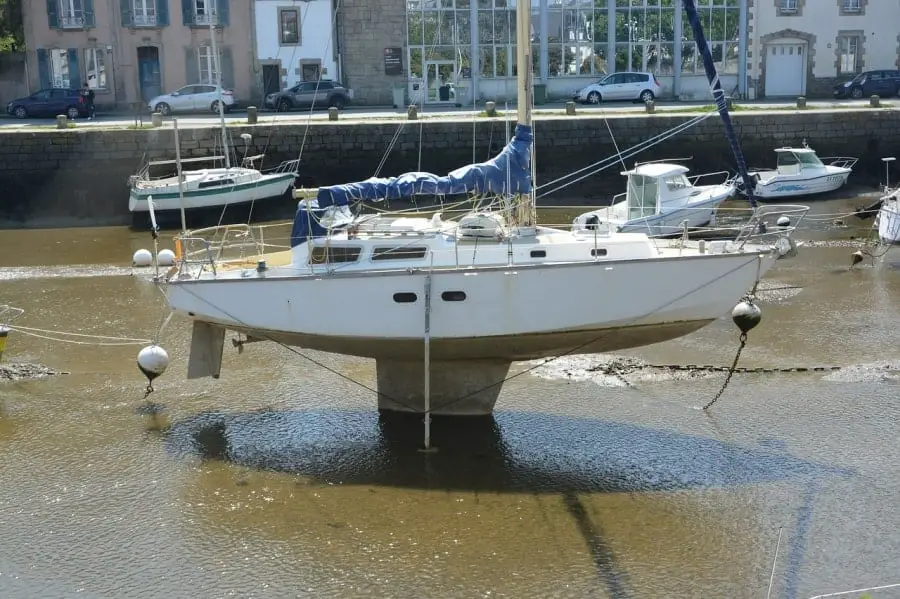
If you’re new to sailing, you might be wondering what that wing-like object is doing attached to the bottom of your sailboat. Well, that would be called the keel and it serves some important functions so that your sailboat can… sail!
So what are the different types of sailboat keels? The most common types of sailboat keels include full-length, fin, short, wing/bulb, bilge, and centerboard keels.
There’s a lot of useful knowledge when it comes to understanding keels since they take such a considerable role in making a sailboat a sailboat.
Knowing the different types of sailboat keels can really make a difference when heading out on the water for a nice sailing session.
Quick Keel Knowledge
Having a sailboat without a keel means you don’t have a sailboat.
As a matter of fact, when a sailboat is first constructed and tipped on its side to attach the keel, or laying the keel, this is considered the “birthday” of a sailboat and thus the initial time of construction.
One of the more interesting facts about keels is they find their origins all the way back in ancient China, which allowed them to expand their naval presence all around the world.
Of the different types of keels discovered were the use of adjustable centerboards and bilge keels.
Now, a keel is an important part of a sailboat because it provides two very important functions:
- Converts the sideways force of the wind into forward motion.
- Provides ballast (i.e., keeps your sailboat from tipping).
We’ll get into these important functions of a sailboat’s keel later on. For now, let’s dive into the different types of sailboat keels!
Different Types of Sailboat Keels
There are several common setups for sailboats when it comes to keels. Even though these types of keels differ from one another, they ultimately serve the same purposes.
However, it’s important to differentiate them based on use cases and other unique characteristics.
1. Full-Length Keel
A common type of sailboat keel is a full-length keel, which uses length rather than depth to provide a sailboat with a proper amount of life and ballast.
When it comes to the location of the rudder on a sailboat with a full-length keel, it’s often attached to the aft (rear) of the keel.
There are several advantages of having a full-length keel. One is that they’re well known for keeping a straight and steady course more easily due to the length and surface area, which makes for a relatively comfortable ride.
Also, if your keel runs aground (the keel touches the sea floor), there’s less likely to be a lot of damage due to a spread of the load.
However, there are some disadvantages to a sailboat that has a full-length keel. Due to the advantage of it staying straight and steady more easily, it’s also slower to turn (tack) when the rudder is moving.
This means you’ll have a longer delay between the turn of the rudder and the turn of the sailboat. Also, sailboats with a full-length keel are a bit slower than others due to the larger surface area dragging against the water.
2. Fin Keel
Another very common type of sailboat keel is a fin keel, which you’ll most likely find on more modern sailboats.
A fin keel has less surface area touching the water when compared to a full-length keel due to it taking on the shape of a… well a fin! This fin, however, sticks out of the bottom of the boat.
Just like the full-length keel, there are some advantages to having a fin keel on your sailboat.
The most obvious one when sailing on a boat with a fin keel is the speed since the fin keel has less surface area and a better airfoil shape just like a wing on an airplane.
A fin keel also provides for a faster response when tacking, which is great if you need to turn quickly.
There are also some issues with having a sailboat with a fin keel. One is that if you have high-powered winds hitting your sails, it’s likely you’ll feel the tilt of your sailboat relatively more than with a full-length keel. This is especially true for different types of sails .
Also, since the tacking is more responsive, you’ll need to spend extra attention on the track of the sailboat as you sail along. With a fin keel, you definitely need to be on high alert at times.
3. Wing/Bulb Keel
Wing/bulb keels are another type of sailboat keel that can be found.
As the name suggests, they take the shape of a wing at the very bottom of the keel and also can have a fat bulb centered at the middle-bottom of the wing. These types of sailboat keels are more often found are longer and heavier boats.
A boat that uses a wing or bulb keel has several advantages that other boats don’t have. For one, it provides a boat with greater efficiency due to a modified water flow that benefits the forward motion of larger boats.
It’s also relatively smaller in terms of surface area and quite hydrodynamic, so there’s reduced friction between the keel and the dragging water.
Similar to the fin keel, the wing or bulb keel has disadvantages related to having to spend greater attention when at the help due to a more responsive tack as well as being susceptible to heavy tilting during relatively strong incoming winds.
4. Shoal Keel
The shoal keel is a type of sailboat keel that’s virtually the same as a fin keel, only it’s a bit more shallow.
Due to it being less deep than a fin keel, it has the advantage of being better able at maneuvering around shallow areas. However, since it does have a smaller surface area it’s much more likely to tilt easier when the wind starts to pick up.
5. Bilge Keel
Bilge keels are a special type of sailboat keel due to them coming in pairs.
When a sailboat has a bilge keel, there will be two fins that stick out at the same angle from the bottom of the hull. Think of the fins of a shark and how they stick out at an angle from the bottom of the body.
There are some nice advantages of having a bilge keel on your sailboat. For one, they allow your sailboat to traverse through shallow water without going aground.
Also, if you let the boat dry out on land, it’s very convenient to simply let your sailboat sit on the fins of the bilge keel.
Some of the disadvantages of having a bilge keel on your sailboat include being difficult to free if ever aground since they might get stuck and not being as effective in reducing sideways slippage (leeway) underwater.
They also produce a lot of drag due to having a large wetted surface, which makes it difficult to sail at greater speeds.
6. Centerboard
Centerboards are another special type of sailboat keel because they can be lowered and raised mechanically. Being able to extend or retract a sailboat’s keel means your sailboat’s less likely to run aground, which makes it a fantastic option for coastal and offshore sailing.
One of the main advantages to having a centerboard is having the ability to retract it when entering shallow water, removing the chance of running aground.
Since you can effectively increase or decrease the surface area of your keel at will, you’ll be able to reduce draft and wetted surface resulting in finer control of the lateral resistance of your keel.
However, there are a few downsides to having a centerboard compared to virtually every other type of sailboat keel. One issue is that they’re rather difficult to maintain.
Another is that they have a ballast that is closer to the core of the boat resulting in the need to increase your sailboat’s ballast displacement. All of this ends up being a headache!
Keels Move a Sailboat Forward
How a keel is able to convert the force of sideways winds to forward motion is based in the science of hydrodynamics, similar to how airplane wings work based on aerodynamics . Essentially what happens is:
- The wind hits the sails at an angle
- The wind force causes the sailboat to tip
- The keel resists the lateral part of the wind force
- Energy from the angle portion of the wind force transfers to forward motion
This explanation is pretty basic, but should hopefully provide a clear insight into how a sailboat is able to produce forward motion thanks to the keel.
Sailing Ballast
One of the most important purposes of a keel is to provide ballast for a boat. Essentially, sailing ballast is the ability to resist the lateral forces of the wind based on the weight and size of the keel. As a matter of fact, this is a major reason why step 4 in the above list is able to produce forward motion.
Now, most keels are known to be made out of cast iron, steel, lead, and even concrete due to these materials being high in density. Back in the day during “olden times”, decent keels were made out of stone and sand.
When a keel has too little ballast, a sailboat tends to tip (heel) too much during high winds. However, if the keel has too much ballast, the sailboat is at risk of capsizing. That’s why a proper amount of ballast is required for light and heavy winds.
There are multiple ways of creating ballast on a sailboat. Apart from having a high-density keel, your sailboat could have a water ballast which allows you to adjust a certain amount of water sitting in your hull.
Another way is “live ballast”, which pretty much means the excess weight on the sailboat produced by us sailors.
Positioning dense weight below the hull to produce good ballast is important, which is why keels are the perfect place to put it.
In the end, proper ballast provides stability and speed for all types of sailboats and is an essential function of a keel.
Get the very best sailing stuff straight to your inbox
Nomadic sailing.
At Nomadic Sailing, we're all about helping the community learn all there is to know about sailing. From learning how to sail to popular and lesser-known destinations to essential sailing gear and more.
Quick Links
Business address.
1200 Fourth Street #1141 Key West, FL 33040 United States
Copyright © 2024 Nomadic Sailing. All rights reserved. Nomadic Sailing is a participant in the Amazon Services LLC Associates Program, an affiliate advertising program designed to provide a means to earn fees by linking to Amazon.com and affiliated sites.

What is a Sailboat Keel?

Last Updated by
Daniel Wade
June 15, 2022
The keel protrudes from the bottom of the sailboat hull. Sailboats utilize a long keel, skeg, or blade to keep a straight course under sail.
The keel is one of the most important parts of the sailboat structure, and it's often the first major piece to be laid down during construction. The keel is the backbone of the boat and often contains a significant amount of ballast to keep the boat stable. There are several types of sailboat keels.
Table of contents
How Sailboat Keels Work
In simple terms, the keel of a sailboat acts as a water foil to keep the boat on a straight course. The protruding keel of a sailboat serves the same function as a centerboard or a leeboard with additional structural integrity.
But why do sailboats need a long keel when powerboats use a flat keel? Sailboats don't always navigate with the wind directly behind them. If they did, there would be no need for an extended keel. In other words, sailboats can sail in almost any direction to the wind because the keel helps convert angled force into forward motion. Without the keel, strong side winds would simply push the boat sideways or flip it over.
Keels also provide additional stability and allow the boat to heel over without capsizing. Long, heavy keels reduce rolling in rough weather, and thin, sporty keels reduce friction and increase speed in lighter winds. Next, we'll cover the most common types of sailboat keels and their uses.
Sailboat Keel Types
Designers and engineers have perfected the design of sailboat keels over the years. Keel types vary between boats based on size and the intended purpose of the boat. Fixed keels, which are used on medium and large sailboats, include full keels, modified full keels, fin keels, bilge keels, wing keels, and bulb keels .
Traditional sailboats often utilize a full (or 'deep') keel. This long and heavy keel flows with the shape of the vessel and extends far below the bilge level of the hull. Full keels run the length of the boat, and they're typically deepest at the stern of the vessel. The rudder often runs deep and matches the length of the keel.
Deep keel sailboats are often heavier and displace more water than other boats of similar length. They often have a very deep draft as well, making shallow-water cruising off-limits in many cases. That said, deep keels offer an enormous amount of stability and seaworthiness. Full keels offer the most comfort in rough weather.
Deep displacement hulls are excellent in heavy weather. They're also quite stable at extreme angles, as the added weight and depth of the hull make knockdowns less likely. However, some full keel designs have a tendency to heel violently to a certain angle, which makes some sailors uncomfortable. The 'sweet spot' angle of a full-keel boat is often a bit more dramatic than some would prefer.
Modified Full Keel
The modified full keel is a slightly modernized version of the old-fashioned displacement hull. It runs long and deep like a standard full keel but stops short of the bow and stern. Modified full keels are common, and they likely produce less drag than traditional deep keels.
One benefit of the modified full keel is a reduction in heeling. These vessels offer good all-around performance, but they're not designed for shallow water. Like the full keel, the rudder runs deep along the length of the modified keel. Modified keelboats are quite comfortable at sea, but nothing beats a full keel.
Fin keels are quite common on modern boats, and they range in size in depth dramatically. Fin keels are generally mounted from the center of a round-bottom sailboat and extend several feet below the base of the hull. At their base, fin keels are usually no longer than 1/3 of the vessel's waterline length.
Fin keels generally offer superior windward performance compared to full keels. They can be designed to reduce heeling, which can improve occupant comfort in some weather conditions. Fin keels are often made of steel, filled with lead, or weighted down in some way. This additional ballast improves stability and balances the boat.
Speed is another major advantage of the fin keel design. Fin keel sailboats achieve incredible speeds thanks to reduced drag. Racing boats often employ fin keels, but the benefits aren't limited to competition craft. Adding a few knots of speed on a long voyage can shave days off your arrival time, which is why fin keel sailboats are popular for ocean crossings.
Fin keels often run as deep or deeper than full and modified full keels. Sailors need to keep this in mind, as running aground with a fin keel can damage more than just the bottom of the boat. Fin keels are designed for coastal and bluewater cruising. And while fin keels are suitable for bluewater sailing, they can be less comfortable than full keels in inclement weather.
Skeg Rudder Fin Keel
Some fin keels feature a skeg rudder. This type of rudder runs deep and often matches the depth of the keel. But unlike a full keel, a skeg rudder is often separated from the keel itself by a gap. Sometimes, the keel re-emerges right before the rudder. This offers additional protection for the rudder.
Spade Rudder Fin Keel
The fastest fin keel design utilizes a spade rudder and a long, thin knife-like keel. A fin keel with a spade rudder has the least amount of drag and therefore outpaces all other keel designs virtually. However, speed comes at a cost. Windward performance suffers, and so does rough water comfort.
Additionally, sailboats with these types of fin keel have no extra rudder protection. Any contact with the bottom can shear the rudder clean off. Rough water and debris are also quite unwelcome and sometimes pose a serious threat. That said, these boats are superior for racing and traveling on the clock.
A bulb keel can be considered a type of fin keel, but this design deserves its own category. Bulb keels are excellent for shoal-draft boats, as they reduce draft without sacrificing a significant amount of performance.
Bulb keels are shortened fin keels with a torpedo-shaped bulb at the base. The bulb increases the surface area of the fin without significantly increasing its depth and also stores the required lead ballast to maintain stability.
Additionally, bulb keels are less vulnerable to grounding than traditional fin keels. For one, they're shallower and less likely to touch the bottom in the first place. But unlike fin keels and full keels, they're blunt—that means they won't cut into the seafloor like a blade, and they're easy to free from the muck.
The concept behind the wing keel is the same as the bulb keel, but the execution is a little bit different. Wing keels are short fin keels with horizontal outcroppings at the base. From the front or rear, wing keels look like an upside-down 'T' mounted to the base of the boat. They're great for shallow water, and they offer reasonable stability and windward performance.
Bilge keels are indeed multiple keels. The bilge keel is perhaps the most brilliant shoal draft adaptation for fixed-keel designs. Instead of a single long keel in the center, bilge keel sailboats feature two short keel fins on either side of the hull. They're mounted at opposite angles, reducing draft and coming into vertical alignment when the boat heels.
Twin-keel boat performance varies widely, but these vessels can be impressively seaworthy. Grounding isn't the end of the world, as bilge keels allow the boat to rest flat on the mud without digging in. With twin bilge keels, there's no need to sweat it when the tide goes out.
Related Articles
I've personally had thousands of questions about sailing and sailboats over the years. As I learn and experience sailing, and the community, I share the answers that work and make sense to me, here on Life of Sailing.
by this author
Sailboat Parts
Learn About Sailboats
Most Recent

What Does "Sailing By The Lee" Mean?
October 3, 2023

The Best Sailing Schools And Programs: Reviews & Ratings
September 26, 2023
Important Legal Info
Lifeofsailing.com is a participant in the Amazon Services LLC Associates Program, an affiliate advertising program designed to provide a means for sites to earn advertising fees by advertising and linking to Amazon. This site also participates in other affiliate programs and is compensated for referring traffic and business to these companies.
Similar Posts

Affordable Sailboats You Can Build at Home
September 13, 2023

Best Small Sailboat Ornaments
September 12, 2023

Discover the Magic of Hydrofoil Sailboats
December 11, 2023
Popular Posts

Best Liveaboard Catamaran Sailboats
December 28, 2023

Can a Novice Sail Around the World?
Elizabeth O'Malley

4 Best Electric Outboard Motors

How Long Did It Take The Vikings To Sail To England?

10 Best Sailboat Brands (And Why)
December 20, 2023

7 Best Places To Liveaboard A Sailboat
Get the best sailing content.
Top Rated Posts
Lifeofsailing.com is a participant in the Amazon Services LLC Associates Program, an affiliate advertising program designed to provide a means for sites to earn advertising fees by advertising and linking to Amazon. This site also participates in other affiliate programs and is compensated for referring traffic and business to these companies. (866) 342-SAIL
© 2024 Life of Sailing Email: [email protected] Address: 11816 Inwood Rd #3024 Dallas, TX 75244 Disclaimer Privacy Policy
Better Sailing
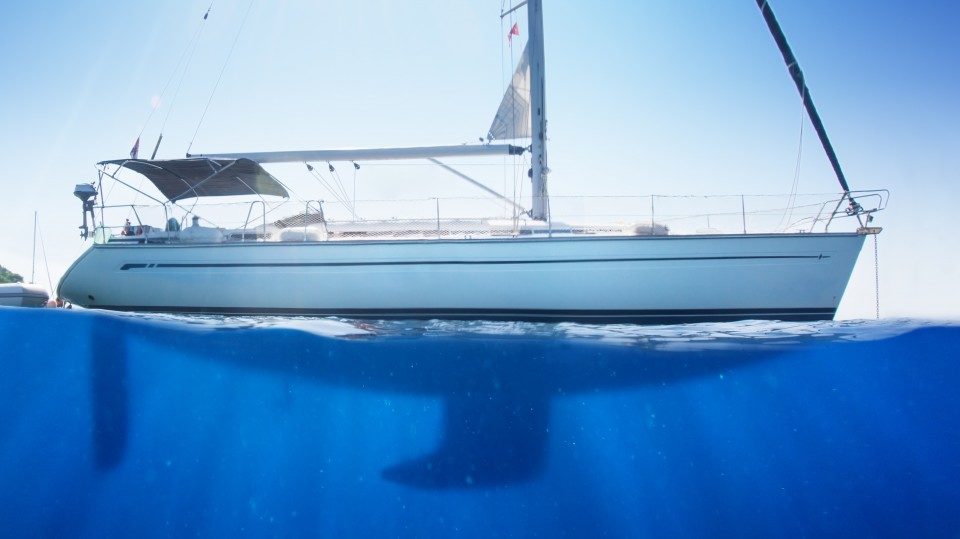
Sailboat Keel Types
There is a wide variety of keels, each with particular characteristics that make them more suitable for certain types of navigation. The keel is the backbone of the ship’s skeleton that helps keep the boat upright, reducing sideways movement, while the rudder (or rudders, some ships have two) steers the boat. The boat is controlled by a wheel or tiller.
In inflatable boats and multihulls the keel, which prevents lateral drift, does not have any additional weight, but in the case of larger monohulls they have ballast keels which also provide a lever to improve the stability of the boat; the more weight under the hull, the more stability it will provide.
What is A Sailboat Keel?
The keel is the very bottom part of your sailboat. It keeps the boat from capsizing. Choosing the right keel for you is very important. Racers and open sea cruisers must have the deepest keels for more stability in rough water and into the strong winds. A disadvantage of a deep keel is the limit of the spots you can reach without running aground. A shallow keel is what you need if you are sailing offshore or even when doing long coastal voyages. Shallow keels are better and easier to find safe anchorages. Also, there is less risk of running aground. Sailboats with a full keel keep their course better and are better for long distances. But, if you are going many maneuvers near shore, a full keel is a bad idea. In this case, a fin keel is better for you. Now, let’s talk about the specific keel types:
Here is a List of The Most Popular Sailboat Keels:
The fin keel is the most common type of keel, it is a single narrow keel under the boat, right in the middle. It usually contributes between 30% and 45% to the weight of the boat. They are very efficient, but it is not the ideal keel for shallow waters.
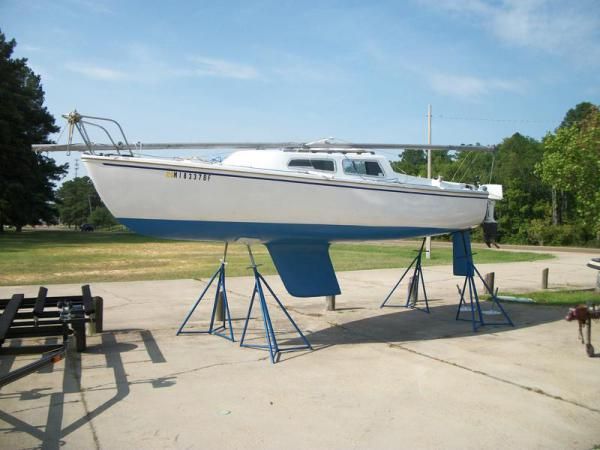
This is a variation of the fin with the weight concentrated in a bulb at the bottom. This type of keel is intended that by increasing stability and concentrating the weight a little higher, it can be used to reduce draft and thus assist navigation in shallow waters.

Full Keel (Or Long Keel)
This longer, shallower keel is usually found on traditional sailing boats. Although popular on long-distance cruises, boats with a full keel are often difficult to maneuver when they are downwind and need to make a large turning circle.
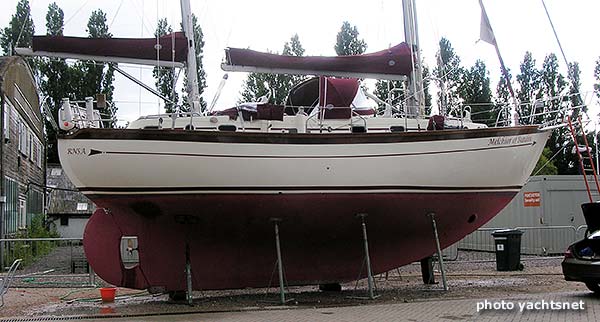
Also Read: Fin Vs Full Keel
A twin keel boat has two shallow keels located one on each side of the hull centreline. Its main advantage is the possibility for the boat to remain standing on the sand during low tide, as well as having a stabilizing effect of reducing rolling. They are most commonly found in small boats but are not as effective in reducing drift.
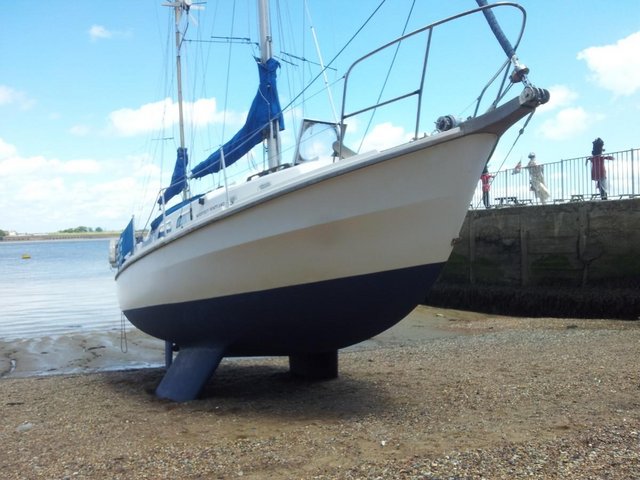
Pivot Daggerboard and Battened Daggerboard
These daggerboards are mobile, so they can withstand the range of maneuverability. Instead, they can be removed inside the hull of the boat to reduce the draft in shallow water, or when leaving or reaching the shore. The pivoting daggerboards rotate on a pin that allows the bottom to pivot upwards, towards the inside of the boat, while the batten daggerboards slide up and down vertically.
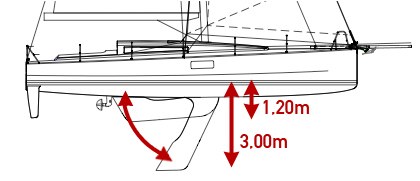
Retractable Keel and Pivoting Keel (Lifting keels)
Similar to the pivoting daggerboard (pivoting keel) and battened daggerboard (retractable keel), but with an addition to the ballast to help stability. These are ideal for shallow waters and are often found on small cruise ships designed for trawling or exploring tidal currents.
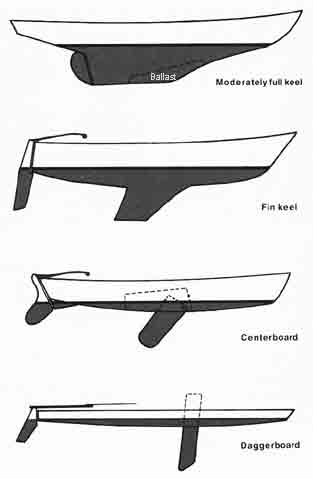
Peter is the editor of Better Sailing. He has sailed for countless hours and has maintained his own boats and sailboats for years. After years of trial and error, he decided to start this website to share the knowledge.
Related Posts

The Ultimate Guide to Choosing the Best Fishing Line for Trolling

Lagoon Catamaran Review: Are Lagoon Catamarans Good?

Best Inboard Boat Engine Brands

Are O’Day Sailboats Good? A Closer Look at a Classic Brand
- Buyer's Guide
- Destinations
- Maintenance
- Sailing Info
Hit enter to search or ESC to close.

Boat Keels & Fins: 7 Types Explained (For Beginners)
A keel is basically a structural component of a boat or ship which looks like a fin that extends at the bottom of a boat on the center-line.
A keel of the boat is usually the first component that is constructed while building a boat. The main purpose of a keel is to offer both strength and balance to a ship or boat while it is in the water.
These keels are available in different designs, as explained below:
Table of Contents
7 Types of Boat Keels Explained

Keels may be found in six varying designs, giving rise to six keel types.
They include:
- Bilge keels
- Centerboard keels
- Canting keels
1) Full Keels
This particular keel by design covers at least half of the boat´s length.
It contains a forward edge that bends upwards, while its aft edge usually links to a rudder. This type of keel has a key advantage of providing directional stability as well as relatively safe and strong grounding of the boat or ship.
When referring to safe grounding, the full keel is safer if the boat gets to lie on hardened ground.
The full keel offers a stable and strong balancing surface for the hull whether the boat is along the coast or while traveling.
A boat or ship which is made with a full keel rides smoothly while traveling in the water, providing great directional stability. For instance, if the full keelboat is well balanced, it enables a boat to stay in the compass direction with the keel keeping the boat in a steady direction.
A full keel design is the traditional style of older wooden boats and many newer boats. It has many years of experience that provides a comfortable and safe boat.
2) Fin Keels
This type of keel has a length that is less than half of the hull length. It is designed with a flat shape that is sharp-pointed at its trailing edge and resembles a shark’s fin. This type of keel is very fast , it contains less wetted surface as compared to full keels, and it also has a deeper draft than the others.
Often, the deeper the fin keel´s draft is, the better it makes a ship or boat sail.
When it comes to speed and racing, as well as performance, the fin keel is unbeatable.
3) Bulb Keels
This particular keel is often referred to as a shoal draft fin keel. Typically, a deep fin keel is made shorter and then connected with a torpedo-like bulb made from lead material at the bottom of the keel.
It is specially designed to be shallow to allow sailing or cruising within the Bahamas or the Chesapeake Bay as well as other areas with shoal water depths.
However, this design does not significantly compromise the boat´s performance since they have been used on older racing sailboats.
If you are planning to sail over shoal waters, a bulb keel may be appropriate. Sometimes, they are not as shallow as other special full keelboats, however.
4) Wing Keels
The Wing Keel may be used as an alternative when sailing in shoal waters.
This does not use one bulb at the bottom of the keel; instead, it makes use of two plates that are attached laterally at the bottom of the fin keel.
This type is considered by some to be better when it comes to performance as compared to bulb keels since it minimizes tip vortex turbulence while sailing. Its draft is usually less.
Additionally, since the two sides are designed in a manner that they offset each other, as the boat heels while sailing, the lateral resistance is not reduced as much as with straight or bulb keels.
However, this type of keel is hard to free in case the boat gets stuck into the muck. Their wings usually go deep and grip onto the bottom of the ground, making it difficult to release once it gets stuck.
Some of the advantages of a wing keel include:
- Minimized draught
- deeper center of gravity, which implies they have better righting moments
- re-engineered water flow above the keel foot implying that they have high efficiency and results in better sailing characteristics.
On the other hand, its disadvantages include:
- It can be more difficult to free if the boat goes aground
- this type of keel is likely to collect objects such as lobster pots as it sails
- and weed may grow at the bottom of the wings, which can become hard to remove.
5) Bilge Keels
These double bilge keel makes a boat stay upright in case of a dried out low tide.
This design results in a shallower draught as compared to fin keels. This feature makes it appropriate for sailing in shallow waters along the coastlines.
However, this type of keel does not perform as well as a single keel and is therefore used for sailing instead of racing.
6) Centerboard Keels
This is yet another alternative that may be used in shoal waters.
The centerboard keel contains a base keel, which has an internal centerboard that rotates downward to create a deeper keel when sailing.
If the waters are deep, the sailor gets better performance with the centerboard down. If you are sailing in shoal waters, you should sail with the centerboard upwards.
This feature is important as it helps to provide the boat with a performance similar to a deep keel and yet to offer improved maneuverability in shoal waters.
However, the main disadvantage of the Centerboard keel is maintenance. It is difficult and problematic when it develops mechanical issues.
7) Canting Keels
This type of keel is the most unique when it comes to performance.
It is connected onto a special (strong) hinge, and as the boat or ship heels, the crew uses hydraulics to move the keel in the windward direction.
This process of moving the keel in a different direction from your heading direction makes it possible to maximize the lateral force and the righting force, to sail faster.
The main challenging posed by this keel is maintenance due to the complex design of the canting keel. It is usually only found in specialized racing boats.
It has a promising future when it comes to racing, but it is not recommended too often because of its complicated operations.
Common Problems With Boat Keel and Fins
First, fins and keels are not protected from potential external impacts. By their design, they are long components with lever-like arms.
Therefore, if an underwater object was to be hit, like a sunken piece of log or even the sea bed, the force that would result is likely to be multiplied before being re-transmitted onto the entire boat over the keel area.
Therefore, the small surface is likely to encounter excess loads, which may result in cracks.
For instance, on the Chesapeake Bay, the majority of the creeks range from 4.5 -5 feet downwards. Boats and small ships that attempt to get too close to shore may often get grounded at some point. The moment grounding happens, the force which results and exerts pressure onto the keel is strong enough to generate cracks on the keel or along the hull.
The cracks are only physical indications of the damage caused.
For instance, the bolts which are connecting the keel and the hull at the bottom of the bilge may be frequently wet, resulting in bolts rusting and getting corroded.
When this happens, the forces together with rusted bolts will result in the keel falling off. This is dangerous and can cause severe accidents.
When the keel is removed or damaged, and the keel bolts develop holes, it allows water to flow into the hull. If the holes remain in that condition for a while, this may cause the boat to sink as a result of the incoming water.
Also, when the keel has been compromised in some way, the ballast or righting weight, which helps to counter the sails, is eliminated. In this case, if strong wind heels over your boat, it may result in the boat capsizing!
To make it worse, after the ship has capsized, you will not be able to right it since the ballast will not be there. Therefore, when a keel is destroyed, it makes the sailing horrible!
Finally, if you want to sail a boat with a fin and keel, it is recommended to avoid sailing through shallow waters. In case your boat gets grounded, the underwater appendages may be destroyed, and repairing such elements is very expensive and time-consuming.
You should take a fin keelboat or ship as a deep water machine! In deep waters, it glides over and through the water waves efficiently and easily.
Click to share...

Sailboat Keel Types: Pros And Cons 2024
Sailboats are highly versatile vessels that offer a unique form of entertainment and leisure, yet before you can truly unlock their potential, it is important to gain an understanding of all the different keel types available—each providing its own advantages.
Whether you’re new to sailing or an experienced sailor looking to ride a different wave, this post will provide you with insight into all the various sailboat keel types and highlight the advantages they present.
In this blog post, we’ll explore the advantages of different keels, as well as discuss the best route for outfitters trying to decide which is right for them.
From fin stabilizers to centerboards, let’s dive right in and explore which one best suits your boating needs!

Table of Contents
Centerboard keel, what is a sailboat keel, what is the purpose of a keel on a boat, sailboat keel materials, can you sail without a keel, how to look after your keel, what to do if your keel breaks at sea, sailboat keel types and their advantages.

From improving maneuverability in tight spaces to increasing stability when combating choppy seas, understanding how each type works can give you the edge you need to brave any challenging conditions that come your way.
Here are the most common types of sailboat keels and their advantages and disadvantages.

A full keel is one that runs pretty much the whole length of the sailboat.
This is one of the most stable types of keel, and is popular with offshore cruisers looking for a solid, rugged sailboat.
A full keeled sailboat will usually fare better in heavy weather. They tend to track better in big waves and there is less risk of you losing the keel compared to other keel types.
Another advantage of full keeled sailboats is that they are safer to run aground (if you find yourself in that unfortunate situation), and the rudder is pretty well protected.
The disadvantages of full keels are that they don’t maneuver well in reverse. This can be a big problem when coming into moorings astern, especially in the Med where stern to mooring is popular. They also tend to need more power to tack effectively.
Full keels are usually also deep keels (though you can get full keeled sailboats with shallow keels too). It’s really important to consider the draft of a boat before buying, because you’ll want to be sure you can cruise it in your desired waterways.
How to tie a sailboat to a mooring ball

Fin keels are probably the most popular type of keel on modern boats, and you’ll see many of them around a boat yard.
Fin keels look how they sound, like a fin underneath the boat. They tend to hang quite low to make up for a smaller amount of ballast, so boats with a fin keel usually have a deeper draft.
There are many advantages to fin keels, explaining why they are so popular today. They tend to outperform full keeled points on most points of sail, especially close to the wind where they can point closer and sail faster.
They handle more easily under power and can go astern, making mooring easier. They are also more agile when tacking.
The main disadvantages to a fin keel are that they tend to be less stable. They will power up quickly and heel quickly, so reefing at the right time is paramount.
Another concern from many sailors is the fact that fin keeled boats are bolted on. If those bolts aren’t regularly inspected and maintained then they can fail, resulting in your sailboat losing its keel with catastrophic results.
Because they tend to have a deeper draft there is more possibility of them grounding, and more possibility of a grounding having serious consequences.
Although these safety concerns are sometimes overdramatised by the sailing community (plenty of people cross serious oceans in fin keeled boats every year), they are something to bear in mind.

A bulb keel is very similar to a fin keel, only it has additional ballast at the end, usually in the shape of a bulb or teardrop which is where it gets its name.
The ballast improves stability, using the distance between force and counterforce as a lever.
The benefits of a bulb keel are very similar to that of a fin keel, but you’re likely to find increased comfort and stability and better performace.
The cons are also very similar to fin keels, and you’ll want to check the keel bolts carefully before you purchase a boat with a bulb keel, and make sure you’re on top of regular maintenance too.

A wing keel is again very similar to a fin keel, but with a horizontal fin at the tip of the keel that looks a little like wings.
The design of this keel gives most of the same advantages of a fin keel, but the edge it has over it is the fact it can have a shallower draft, meaning you can sail in shallower waters. These boats tend to be popular for river or lake sailing for this reason.
The cons of this design are that you will lose some windward performance compared to the fin keeled sailboats, and you might find the wing creates drag and therefore a slower performance overall.

A bilge keel boat has two keels, or twin keels placed off centre. They are a popular type of keel although less common than fin and full keels.
One of the big advantages of these types of sailboat keel is that they allow the boat to be beached and rest on the keels. This also makes running aground safer, especially compared to fin keeled boats.
Bilge keels have double the wetted surface area, increasing the overall comfort of the boat and its directional stability. They also sail pretty well to windward.
Compared to the fin keel, bilge keeled sailboats tend to be slower, especially the older models. What you lose slightly in speed you tend to make up for in comfort.
Sailboats with a centreboard keel can give you the best of both worlds. With a keel that retracts, usually resting on a hinge that can be raised or lowered through a slot in the hull, it can increase or reduce the draft of a sailboat.
You will find sailboats that have ballasted lifting keels, and ones where the centreboard isn’t essential to the stability of the boat and carry hardly any weight.
With the centreboard down, the idea is that the sailboat will track better to wind and give you more maneuverability. It should make your boat behave similarly to a full keeled sailboat.
With the board up, you will be able to reach much shallower waters. It also means the boat is faster under motor alone with less drag through the water, and often a more effective downwind sailor too. Some of the best shallow draft liveaboard sailboats have lifting keels.
The disadvantages of a lifting keel are that you will lose some performance, especially when sailing upwind.
There is also the safety aspect of more working parts that need to be maintained, and with boats that have a ballasted lifting keel the danger of losing the keel is even more prevalent.

A sailboat keel is the fin that hangs underneath a sailboat like a dagger, providing stability against strong sideways forces of wind.
The design is crucial to hold the boat upright and make sailing tack easier, with its depth and shape involving meticulous calculations of size, weight, center of gravity, providing buoyancy, and other features.
On modern sailboats, the keel may be made out of cast iron or steel for extra strength, while traditional boats would opt for a design comprised of lead or copper.
Regardless of its form though, it proves to be an absolute must-have device on any ship meant to travel on wind power alone.

Sailboats are designed to take advantage of the wind, allowing you to traverse the seas with relative ease. But what makes a sailboat so efficient? Well, it all comes down to its keel: the long, usually slightly curved structure that extends below your boat’s hull and helps keep it stable.
The keel on a boat is an integral part of its design and provides many essential functions.
Acting as an anchor, the keel helps to keep the vessel in place regardless of wind and current conditions.
It also helps to increase the stability of the boat by lowering its center of gravity and distributing weight more evenly across it. This improves the handling of the boat, which can be especially important in rough waters.
The keel holds the ballast for the sailboat, keeping it from tipping over and meaning it can right itself if it does capsize.
All told, a boat’s keel plays a very important role in making sure that its passengers have a safe, stable ride out on open water.

Most keels are made from the same material as the boat itself – usually fibreglass, wood or steel.
They will then also contain a ballast. A heavier material that gives the boat its righting ability, and prevents it from capsizing easily in heavy seas.
The ballast in sailboat keels are traditionally created from iron or lead to give the boat stability and balance in the water.

The answer to this question is, it depends. There are sailboats that have been designed without keels, such as sailing dinghies that rely on daggerboards, and catamarans.
If your sailboat has been designed to have a keel, though, then it would be very dangerous to head out sailing without one.
Keels are designed to counteract the forces that the sails, wind, and waves put on a boat and make sure it stays upright. Or if it is knocked over it will right itself again. Without a keel there is a high likelihood that your sailboat will capsize and remain inverted.
As the keel is one of the most important parts of your sailboat you’re going to want to really take care of it.
One of the main things you’ll need to do on a regular basis is keep your keel clean. This will help immensely when it comes to performance, as even a little growth on the keel can slow you down a lot.
Another benefit to keeping your keel clean is that it’s easier to do a basic sight inspection. You can check for any cracks or possible damage that might have occurred if you hit something or run aground.
The best way to keep your keel clean is to have it jetwashed when you come out of the water to antifoul your boat. Without taking your boat out of the water the only way to clean it is to dive down and do it yourself, which many sailors will do at least once a season.
Another very important check to carry out yearly is a keel bolt inspection if your boat has a keel that is bolted on.
Outside check
- Check for rust along the hull to keel joint.
- Check for signs of movement along the hull to keel joint (any cracks or splits in the joint area)
Inside check
- Is the bilge dry? Bilges should be clean and dry to help prevent corrosion.
- Do a visual check of the fastenings in the bilges.
- Check for rust or staining around the fastenings.
- Check for signs of movement. This will probably appear as stress cracks around the keel bolts.
If you notice any of these signs then get your keel checked by a professional surveyor who will be able to tell you what’s going on, why, and what your next steps should be.

It is extremely unlikely that your keel will break at sea, especially if you follow the correct maintenance and make sure that if you run aground you haul the boat immediately for an inspection.
There have been a few cases of keel bolts failing at sea, and these cases obviously hit the headlines as they cause total disaster, and lives are often tragically lost.
If you hear the sound of your keel falling off at sea then you need to act extremely quickly. You have hardly any time at all until the boat is likely to capsize. Make sure you have a command for anyone down below so that they have time to get up on deck immediately.
One of the only things you can do is launch and get into your liferaft before you capsize. This is why it is so important to have a liferaft that is easy to launch and a grab bag with essentials like an Epirb that is easily accessible.
Conclusion: Sailboat Keels And Their Advantages
After exploring the various types of sailboat keels, it’s clear that each offers its own advantages and disadvantages.
While a full-keel boat offers exceptional stability against strong winds or currents, it lacks speed and maneuverability due to its heavier weight.
Conversely, a centerboard or winged keel has far superior speed and agility but lacks the same level of lateral stability as a full-keel boat.
No matter what type of sailing you enjoy, analyzing sailboat keel types can make all the difference in finding the right boat for your needs.
Similar Posts

Buying A Sailboat To Sail The World In

What Is Capsize Ratio And How Is It Calculated?

Living Aboard a Trawler: How to Make Money

Sailboat Provisioning: How To Provision For A Sailing Trip

19 Must Have Items For Sailboat Living 2024
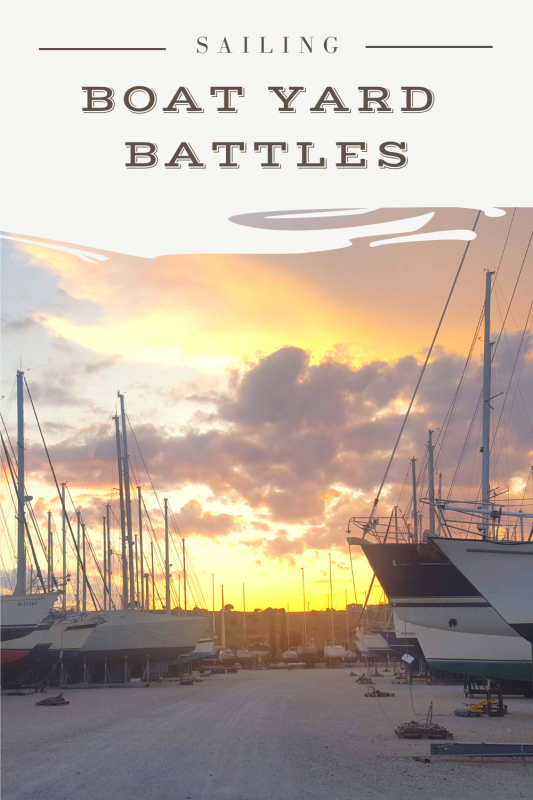
Boat Yard Battles
- Search Search Hi! We’re Emily, Adam and Tiny Cat, liveaboard sailors travelling the world on our 38ft sailboat and writing about it as we go. We hope we can inspire you to live the life you’ve always dreamed, whether that’s exploring the world or living a more simple way of life in a tiny home. Find out more. Patreon
- Privacy Policy
Catalina 34 MkII Fin keel
Sailboat specifications.
- Last update: 1st April 2020
Catalina 34 MkII's main features
Catalina 34 mkii's main dimensions, catalina 34 mkii's rig and sails, catalina 34 mkii's performances, catalina 34 mkii's auxiliary engine, catalina 34 mkii's accommodations and layout.

Similar sailboats that may interest you:

IMAGES
VIDEO
COMMENTS
The most common sailboat keel types are full-length keels, fin keels, bulb keels, wing keels, bilge keels, and lifting keels. Full keels are popular among cruisers, while fin keels are generally used for racing. Bilge keels and lifting keels are typically used in tidal waters, on small fishing boats for example.
Fin Keel Sailboats. The fin keel is, by far, the most common type in modern sailboats. A fin keel is a flat, narrow and hydrodynamic piece located under the hull. Unlike the running keel, it is not an integral part of it but is screwed to it. To compensate for the relatively small ballast it provides, the fin keel is usually deeper.
Take, for example, what happens when a sailboats deep fin keel is wedged in a rocky cleft and a good Samaritan with a big powerboat attempts to pivot the sailboat using a line attached to the bow. The distance from the keels vertical centerline to the stem may be 20 feet or more, and with a couple of thousand pounds of bollard pull, the 20-foot ...
Fin Keel. A fin keel is similar to a full keel, just shorter. There may be one or two fin keels along the length of the boat hull. A fin keel is defined by being less than 50% the length of the boat. The fin keel works almost entirely the same way that a shark's fin does. When you wish to turn, the keel provides the resistive force that keeps ...
The fin keel is a stationary foil positioned amidships and projecting downwards under the hull of a sailing vessel. A fin keel is relatively short in a fore-aft direction, and relatively deep, located near the center of the boat. A fin keel is a fixed element, unlike a centerboard, which is retractable. The design purpose of the fin keel [1] is ...
There are various sailboat keel designs tailored for specific purposes: - Fin Keel: The fin keel is one of the most common types characterized by its long, narrow shape extending vertically downwards into the water beneath the boat. It offers excellent upwind performance while minimizing drag, making it ideal for racing or competitive sailing.
How keel type affects performance. James Jermain has tested hundreds of yachts in his 30 years as Yachting Monthly's chief boat tester. The performance and handling of a yacht depends on many things, but perhaps the most important single feature is the shape of the hull and the profile of the keel. Over the years hulls have become shallower ...
With a fin keel, you definitely need to be on high alert at times. 3. Wing/Bulb Keel. Wing/bulb keels are another type of sailboat keel that can be found. As the name suggests, they take the shape of a wing at the very bottom of the keel and also can have a fat bulb centered at the middle-bottom of the wing.
5. Fin. Sailboat Cruising. Your sailboat likely has a fin keel if it was made in the last 10-15 years. Fin keels are commonly praised for being precise and fast which is useful in fresh water and saltwater. A fin sticks out of the bottom of the sailboat in the perfect shape that doesn't reduce your sailboat's hydrodynamic nature.
Spade Rudder Fin Keel. The fastest fin keel design utilizes a spade rudder and a long, thin knife-like keel. A fin keel with a spade rudder has the least amount of drag and therefore outpaces all other keel designs virtually. However, speed comes at a cost. Windward performance suffers, and so does rough water comfort. Additionally, sailboats ...
Fin Keel. The fin keel is the most common type of keel, it is a single narrow keel under the boat, right in the middle. It usually contributes between 30% and 45% to the weight of the boat. They are very efficient, but it is not the ideal keel for shallow waters. Bulb Keel. This is a variation of the fin with the weight concentrated in a bulb ...
Often, the deeper the fin keel´s draft is, the better it makes a ship or boat sail. When it comes to speed and racing, as well as performance, the fin keel is unbeatable. 3) Bulb Keels. This particular keel is often referred to as a shoal draft fin keel. Typically, a deep fin keel is made shorter and then connected with a torpedo-like bulb ...
Fin Keel We're told the first boats were built in Aluminum in the Netherlands before a plug was made for fiberglass construction by Ta Yang in Taiwan. Also available with a Peugeot 52 hp diesel.
A sailboat keel is the fin that hangs underneath a sailboat like a dagger, providing stability against strong sideways forces of wind. The design is crucial to hold the boat upright and make sailing tack easier, with its depth and shape involving meticulous calculations of size, weight, center of gravity, providing buoyancy, and other features. ...
The Elite 37 is a 35'11" (10.95m) cruising sailboat designed by Ron Holland Design (Canada). She was built between 1982 and 1987 by Kirié (France). The Fin keel version adopts a classical fin configuration, the easiest option to provide a low center of gravity. The Elite 37 has also been marketed as Feeling 1100 and she is as well listed ...
Sailboat specifications. The Catalina 22 MkII is a 21'6" (6.55m) cruising sailboat designed by Frank Butler (United States). She is built since 1995 by Catalina Yachts (United States). The Fin keel version adopts a classical fin configuration, the easiest option to provide a low center of gravity. The Catalina 22 MkII is as well listed, on ...
Sailboat specifications. Last update: 1st April 2020. The Catalina 34 MkII is a 34'6" (10.52m) cruising sailboat designed by Frank Butler (United States). She was built between 1996 and 2006 by Catalina Yachts (United States). The Fin keel version adopts a classical fin configuration, the easiest option to provide a low center of gravity.
DRAFT: This is the depth of the hull from the LWL to the bottom of the keel or fin. Like the LWL, it will vary with the weights of fuel, water, stores and equipment. A boat's actual draft is usually somewhat more than the original designed or advertised draft. For boats with adjustable keels (centerboards, daggerboards, lifting and swing ...